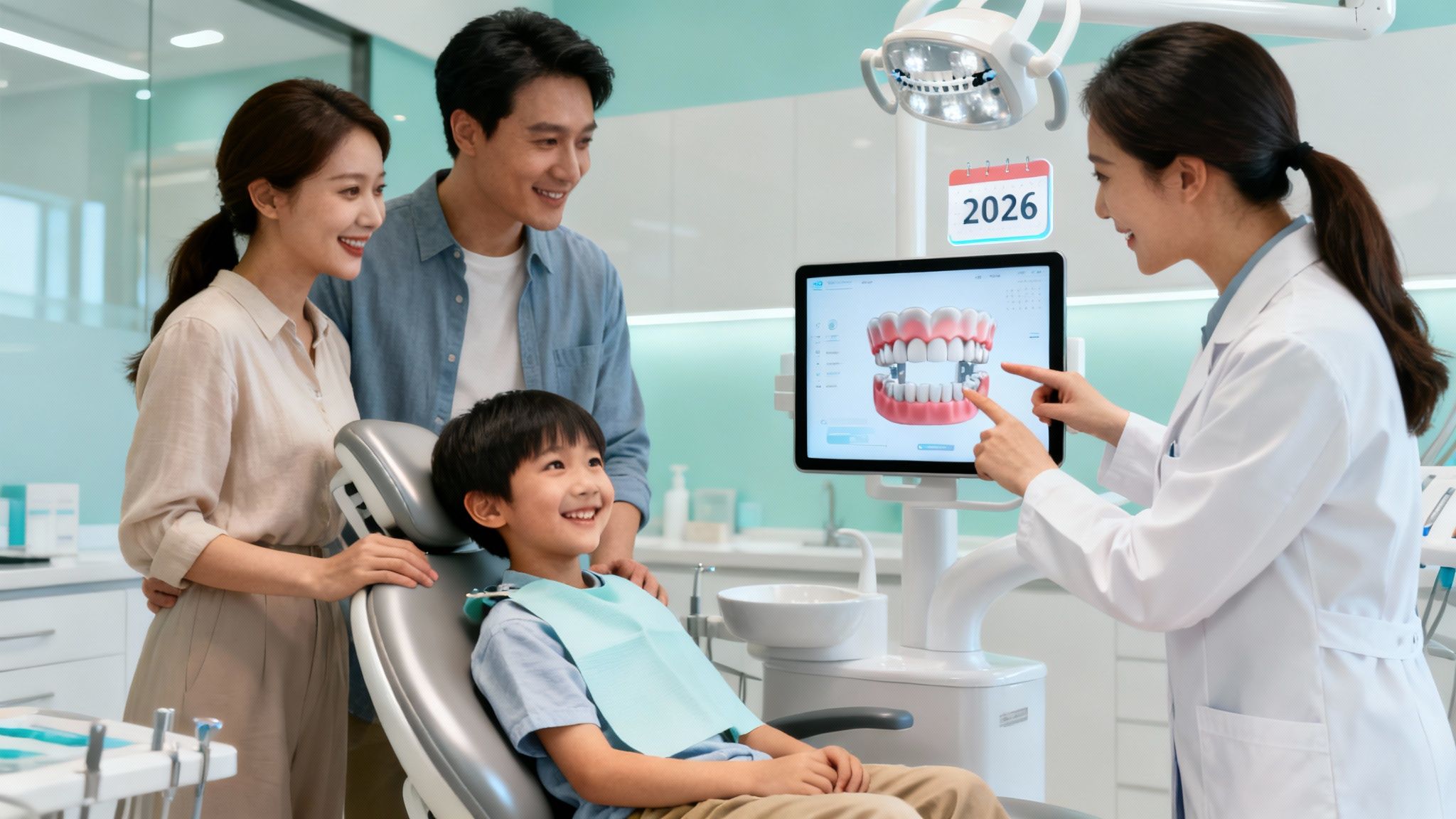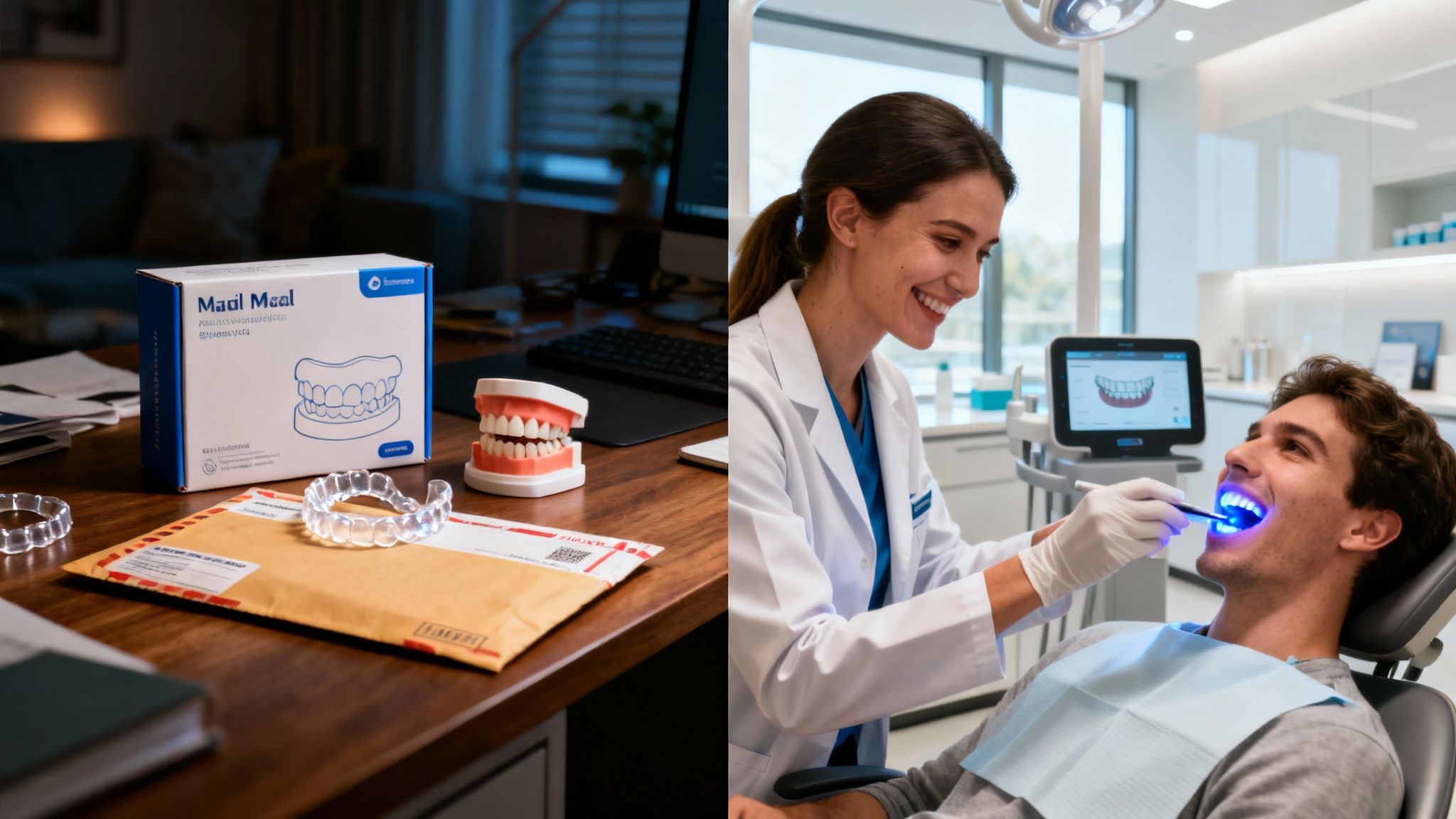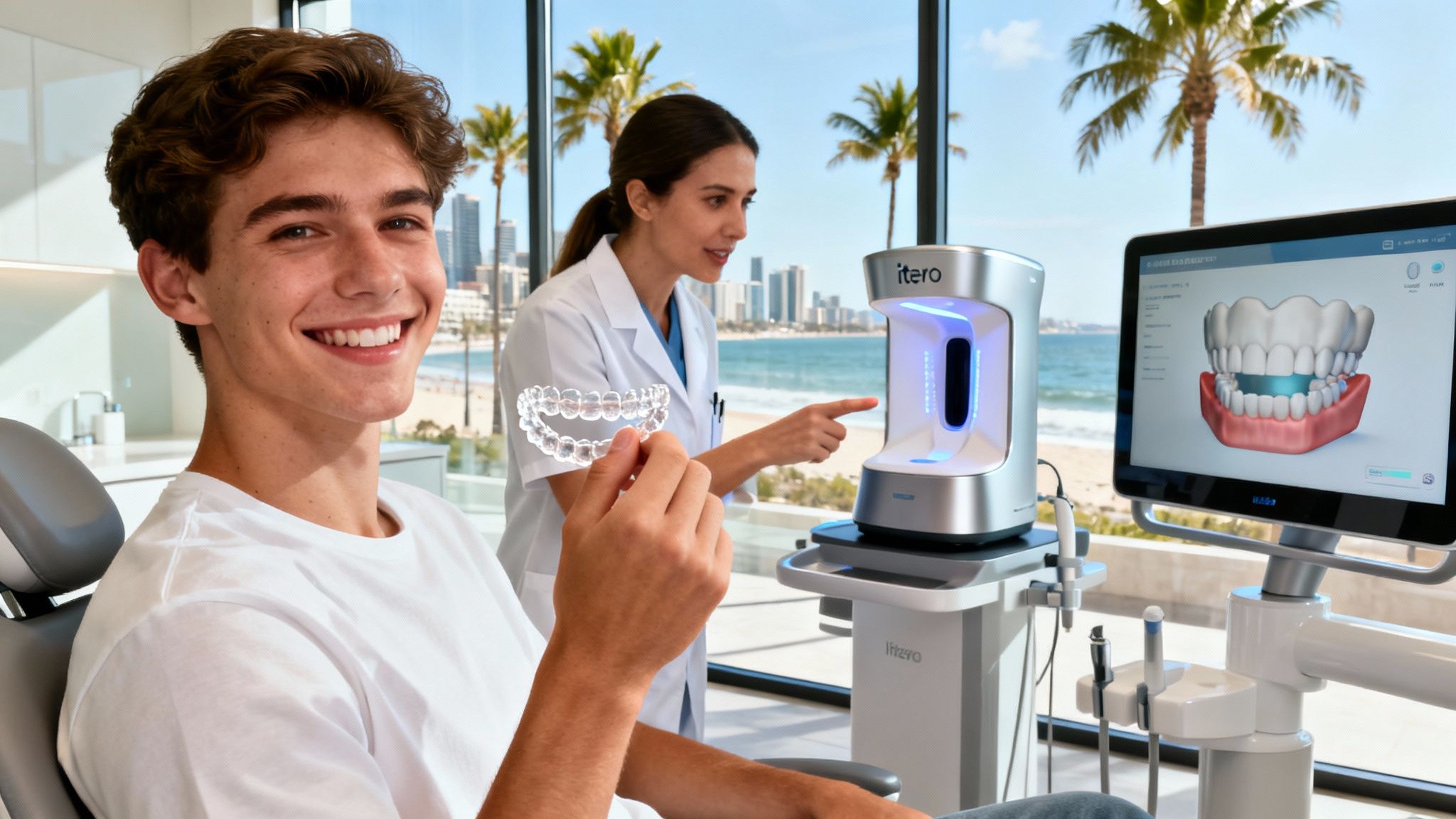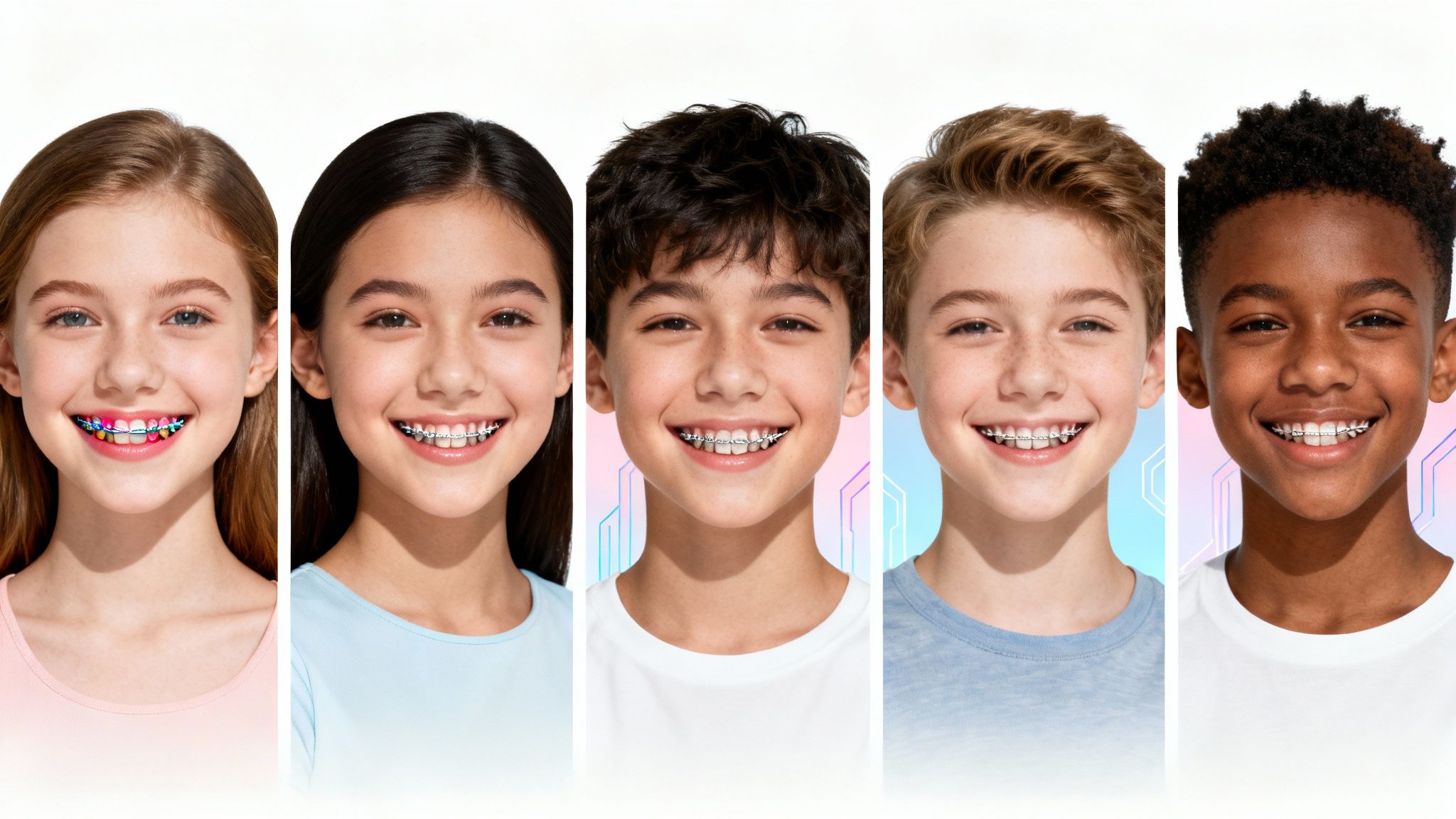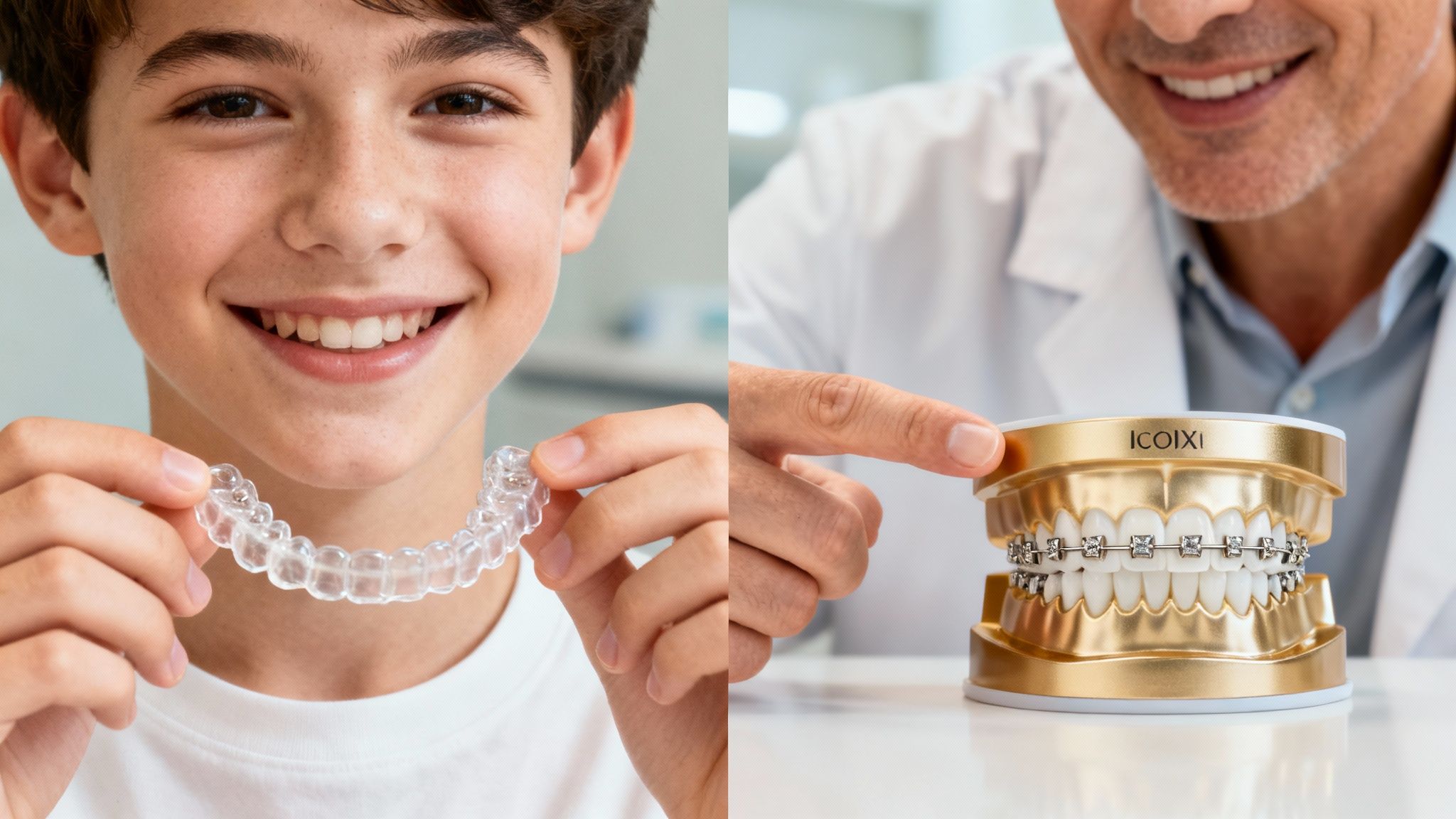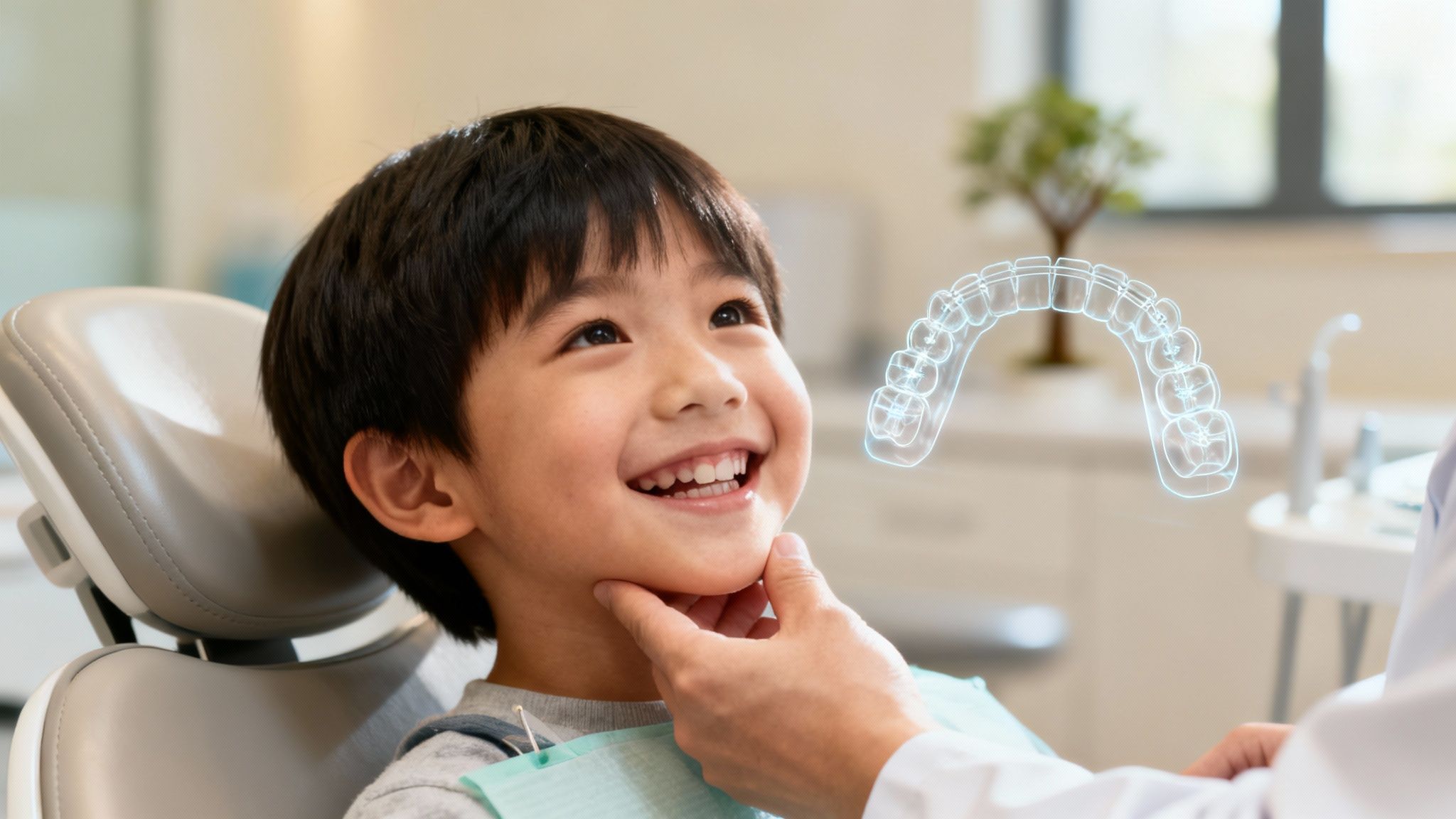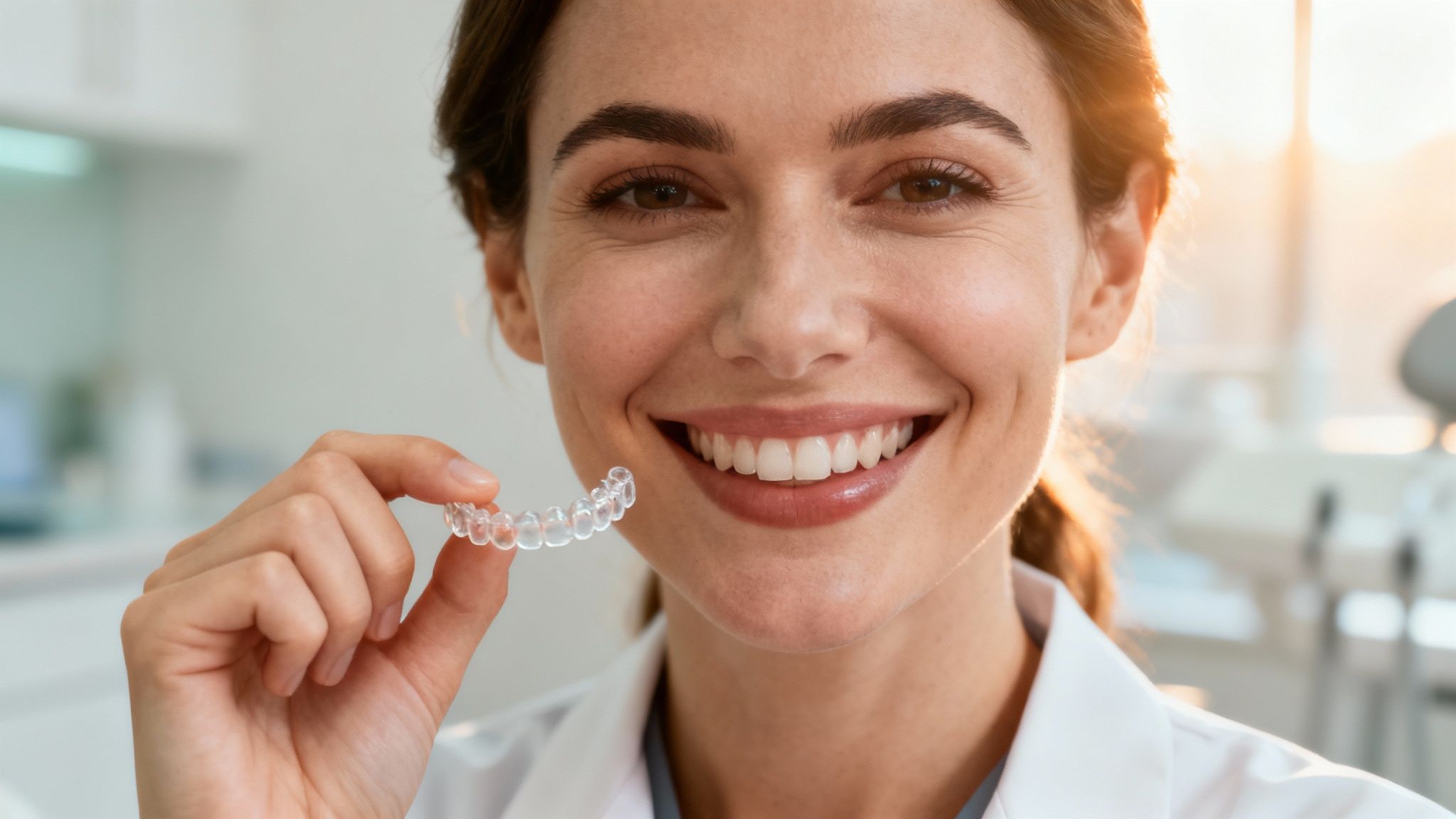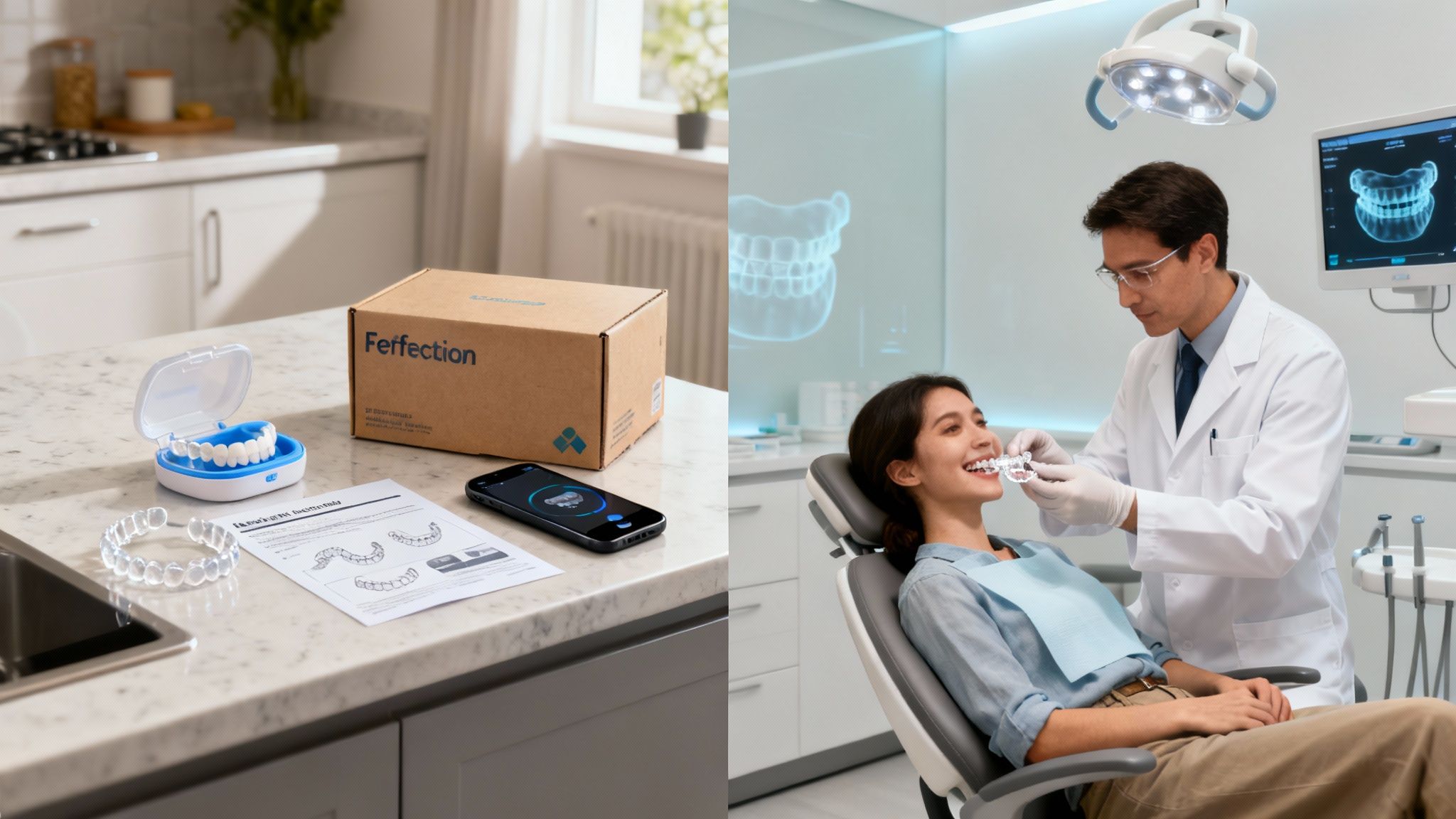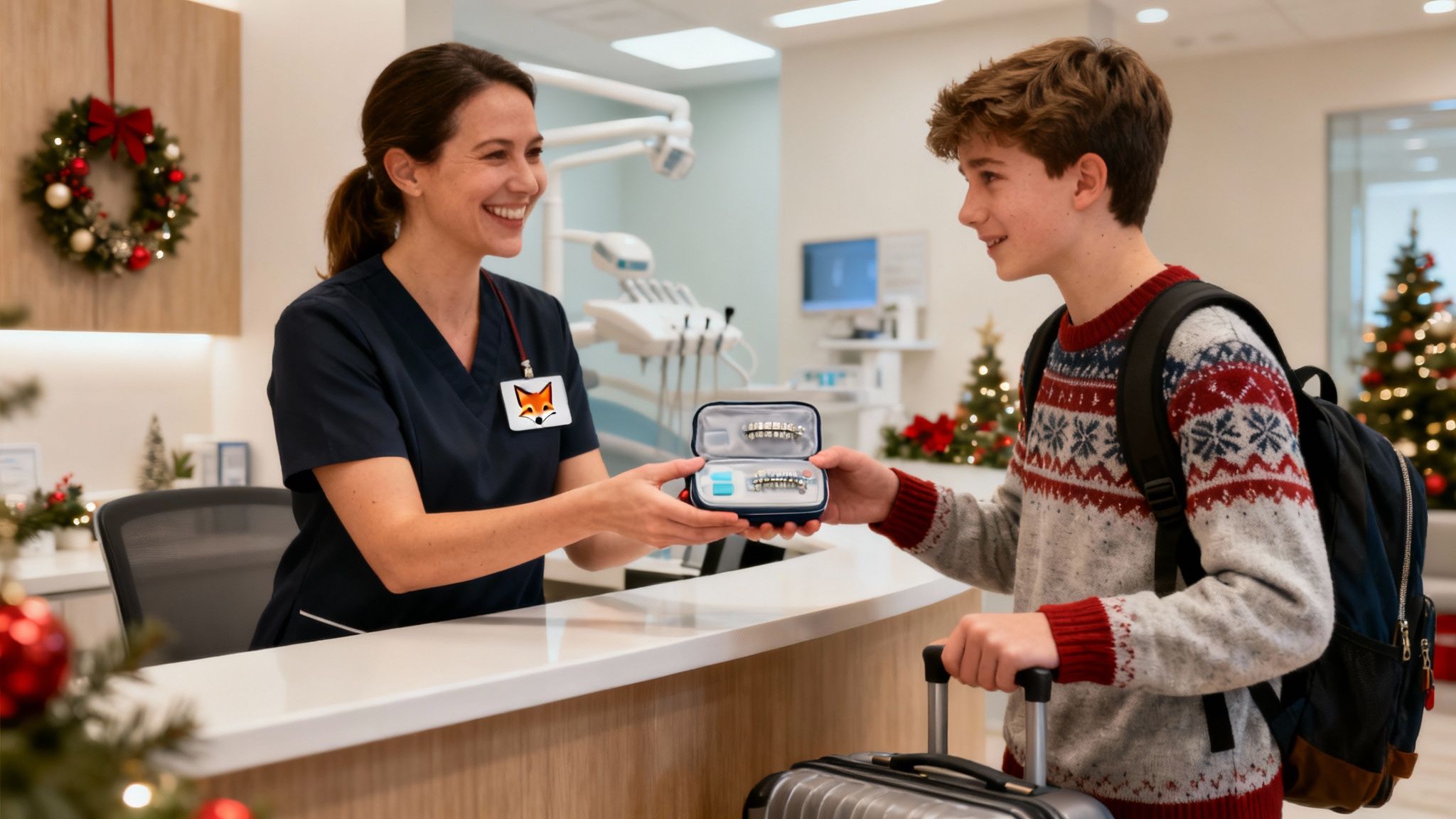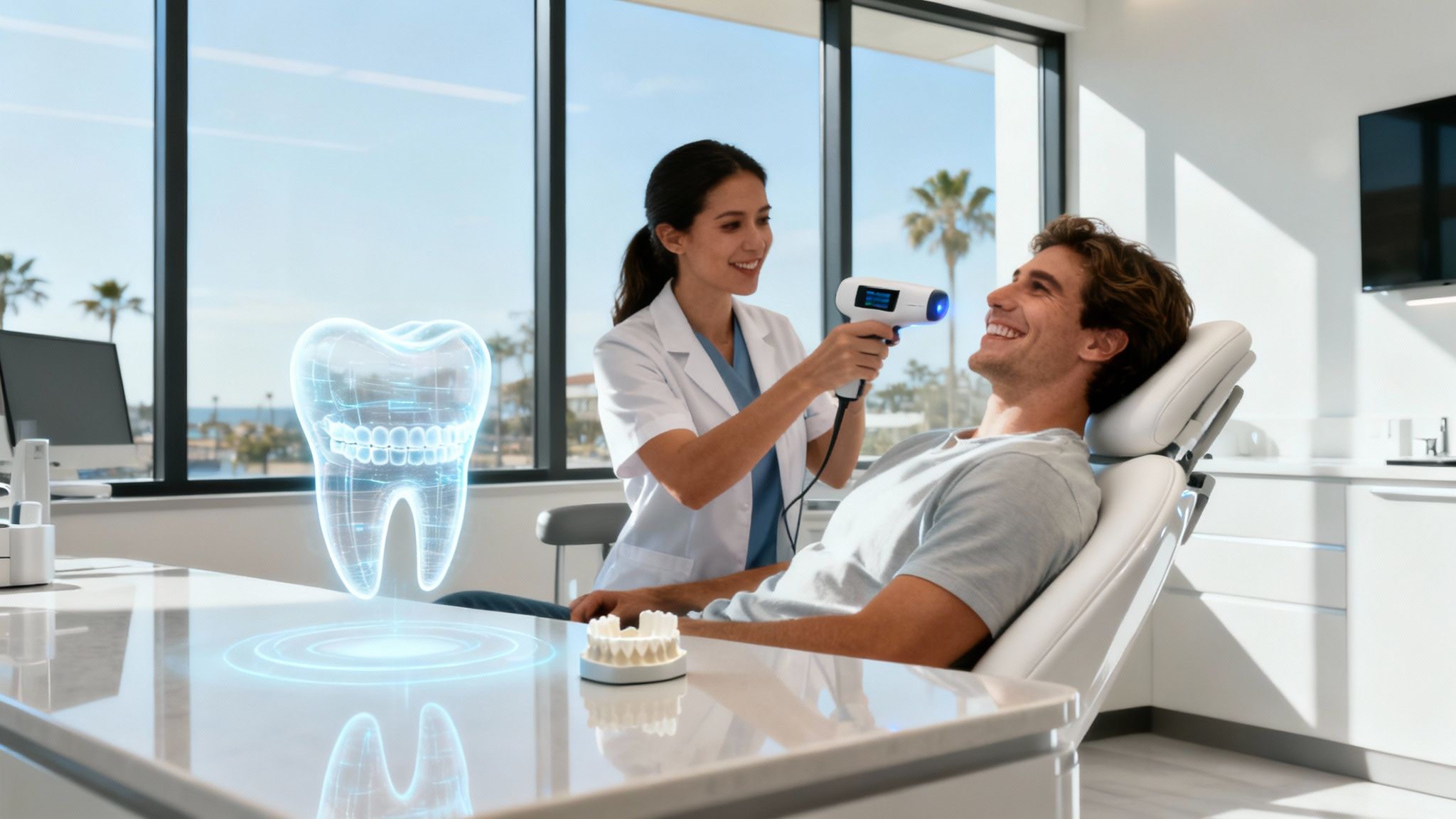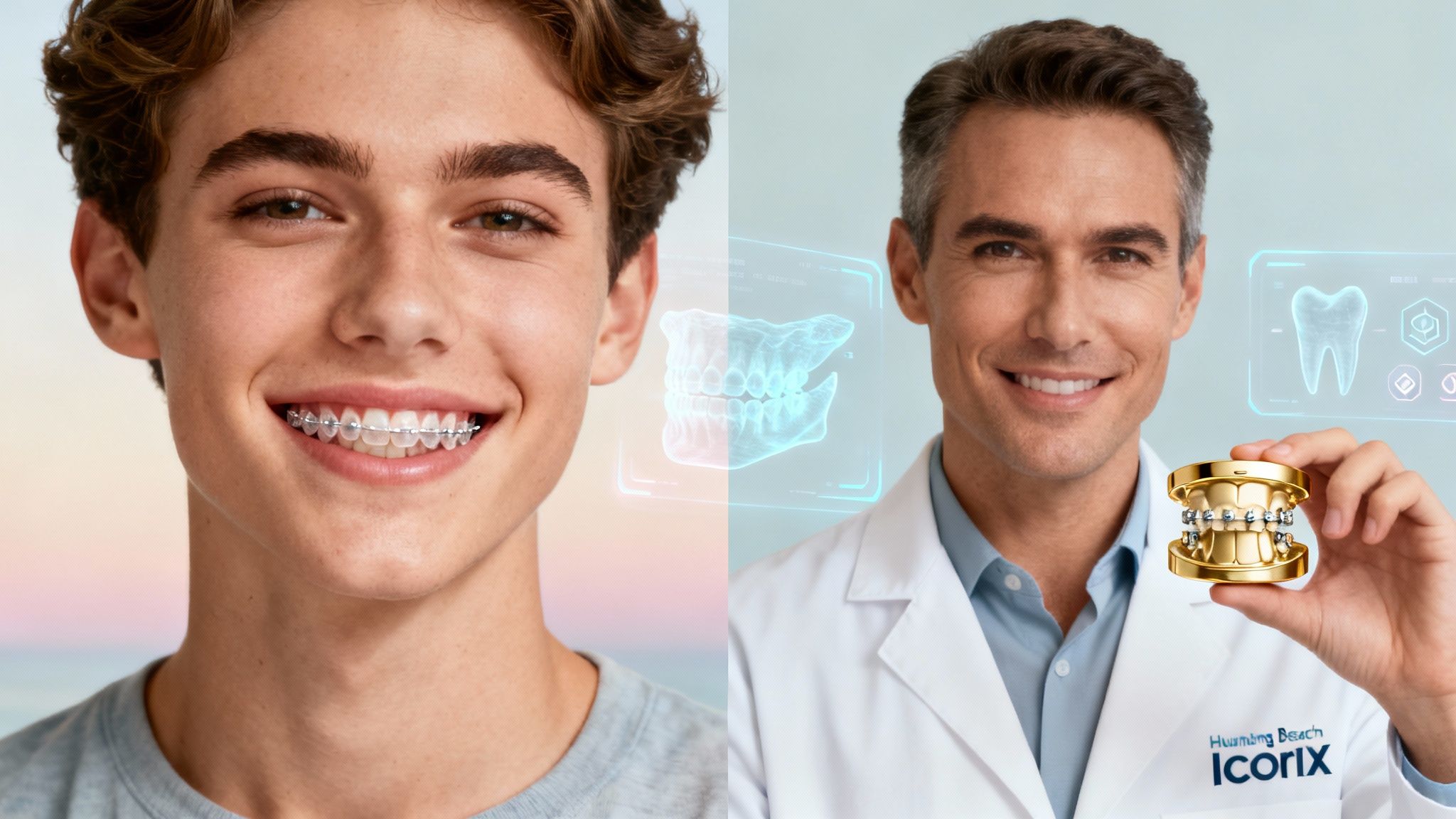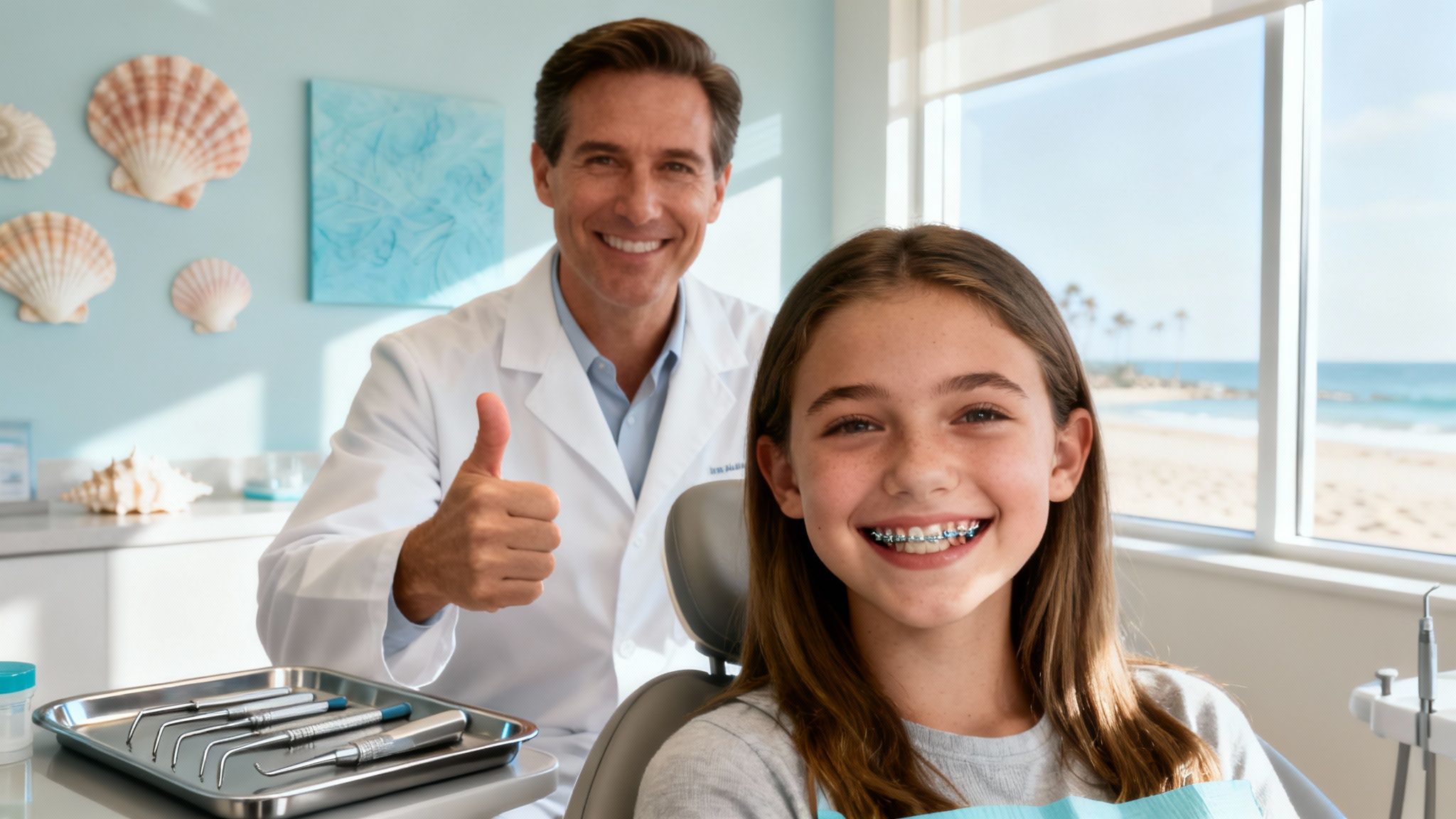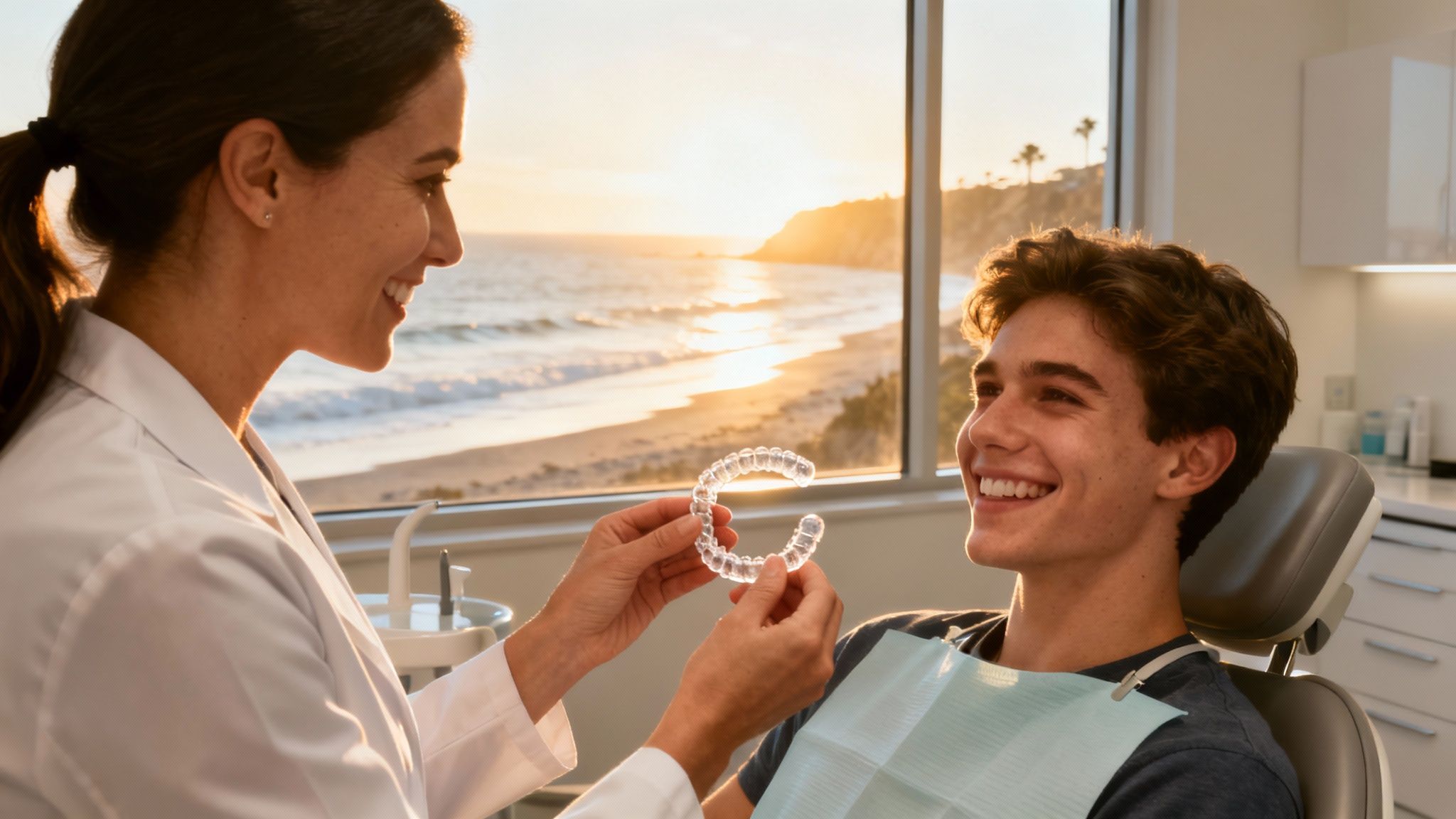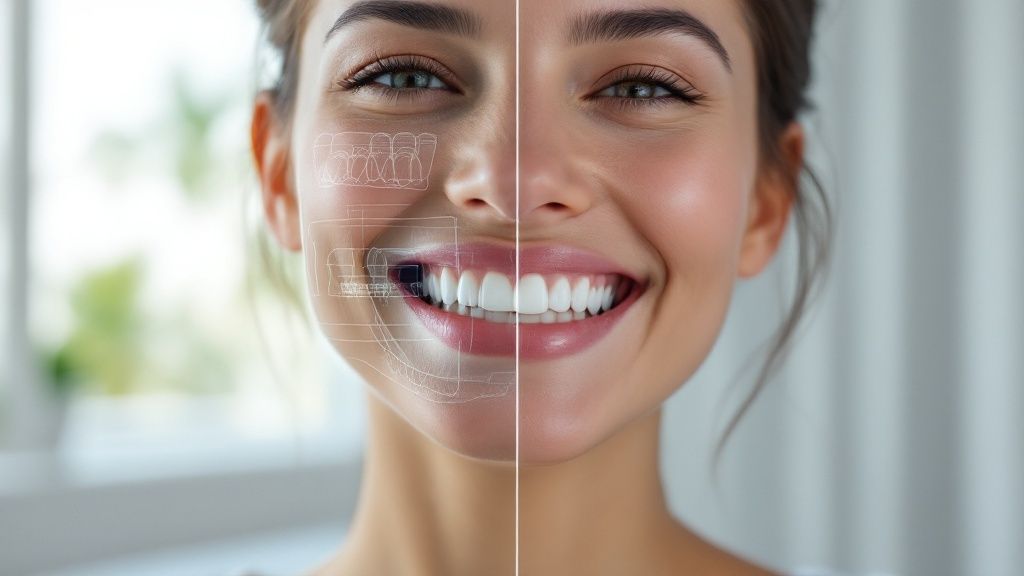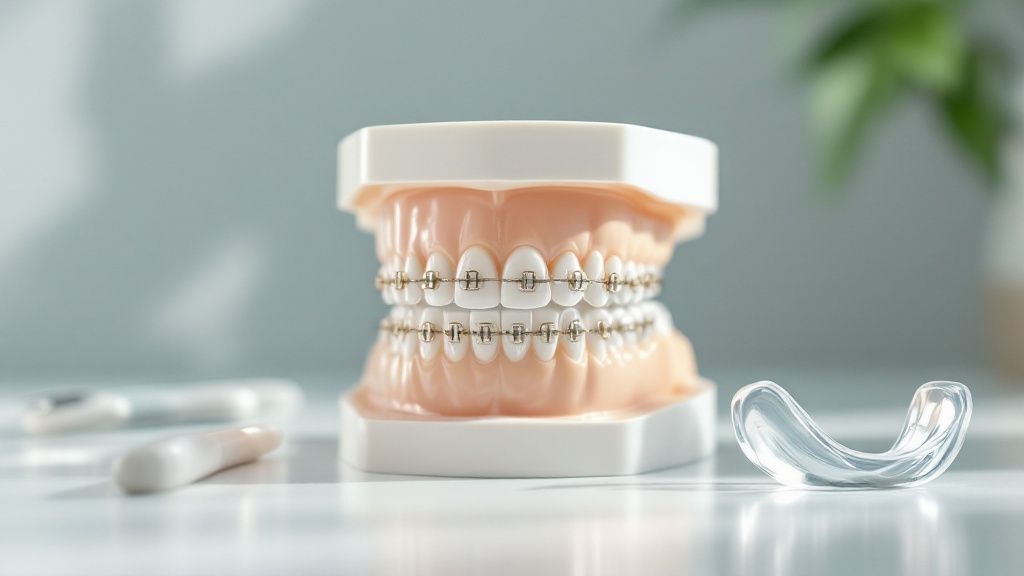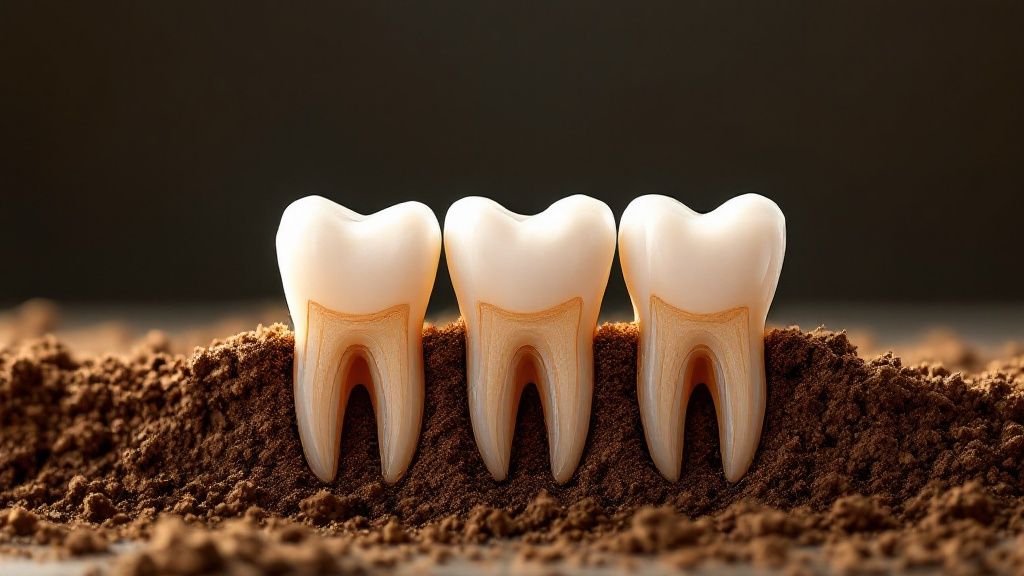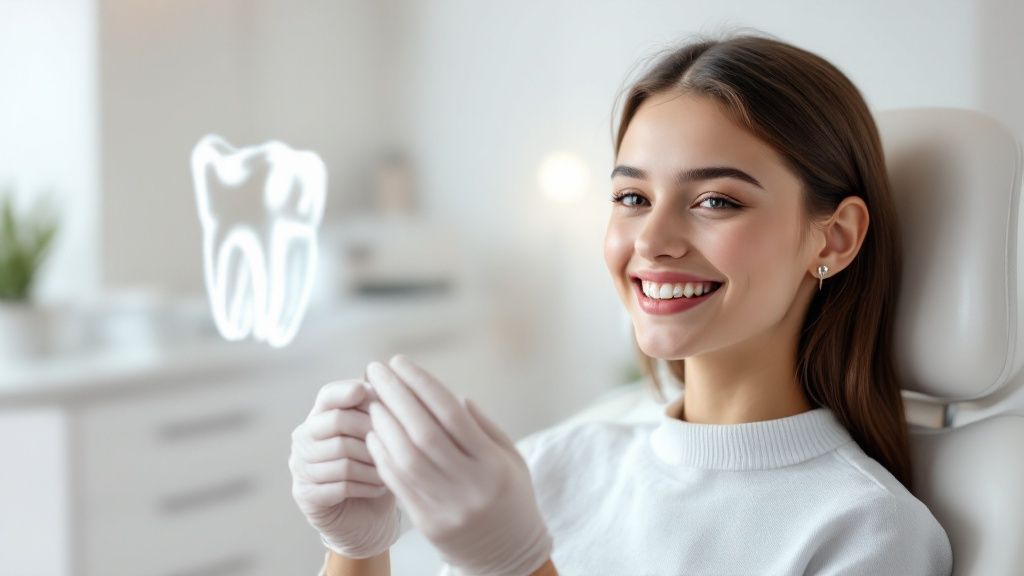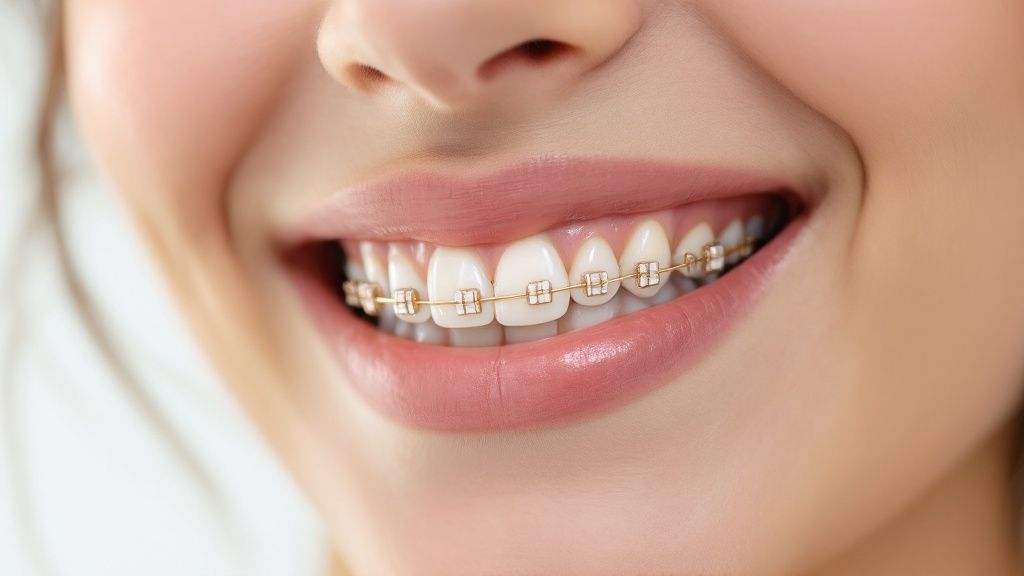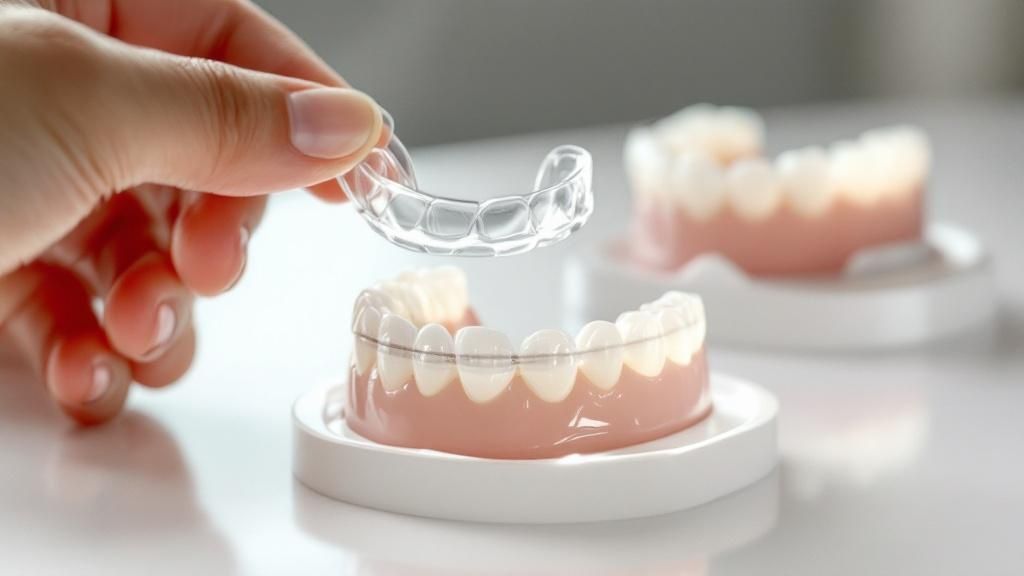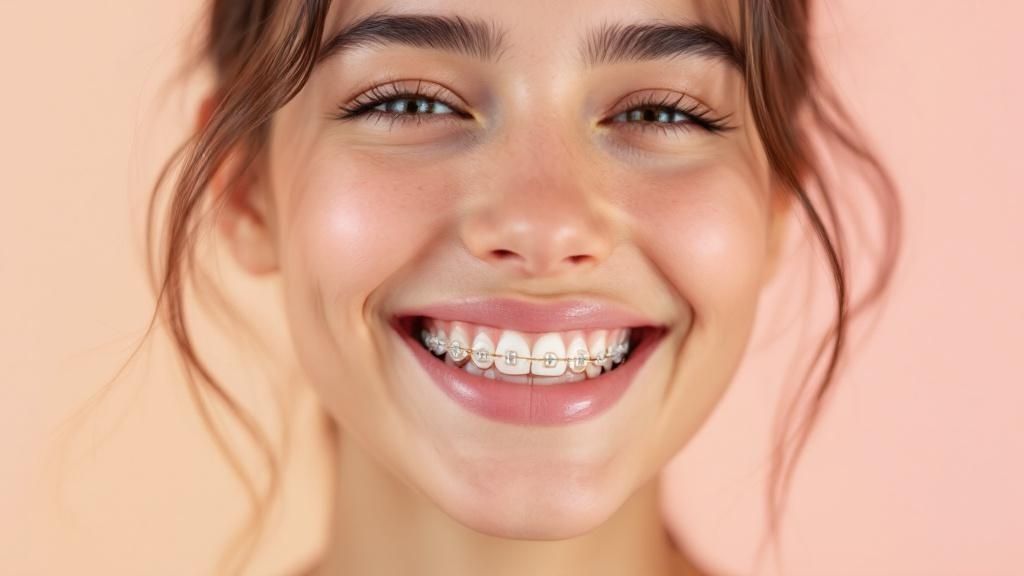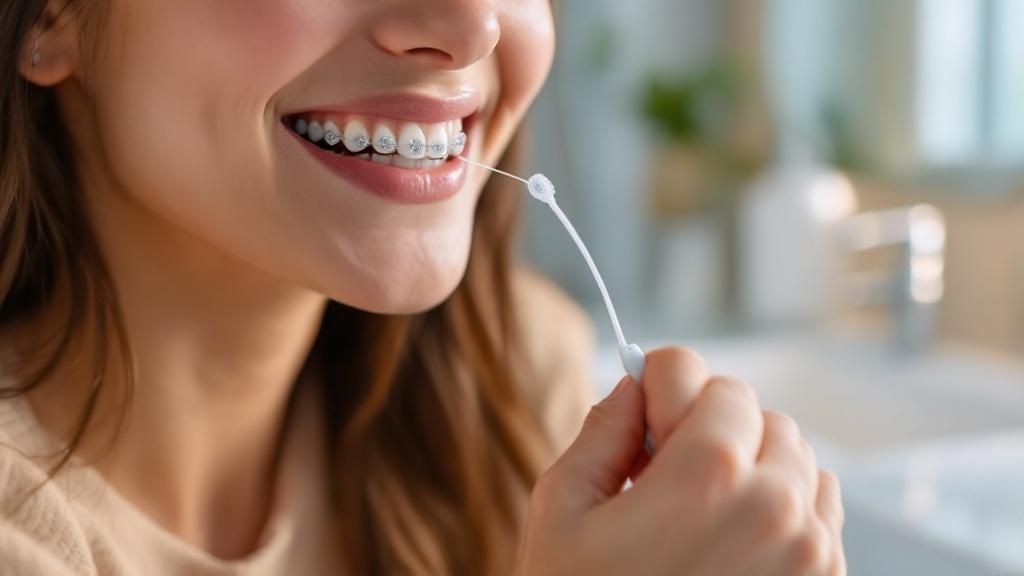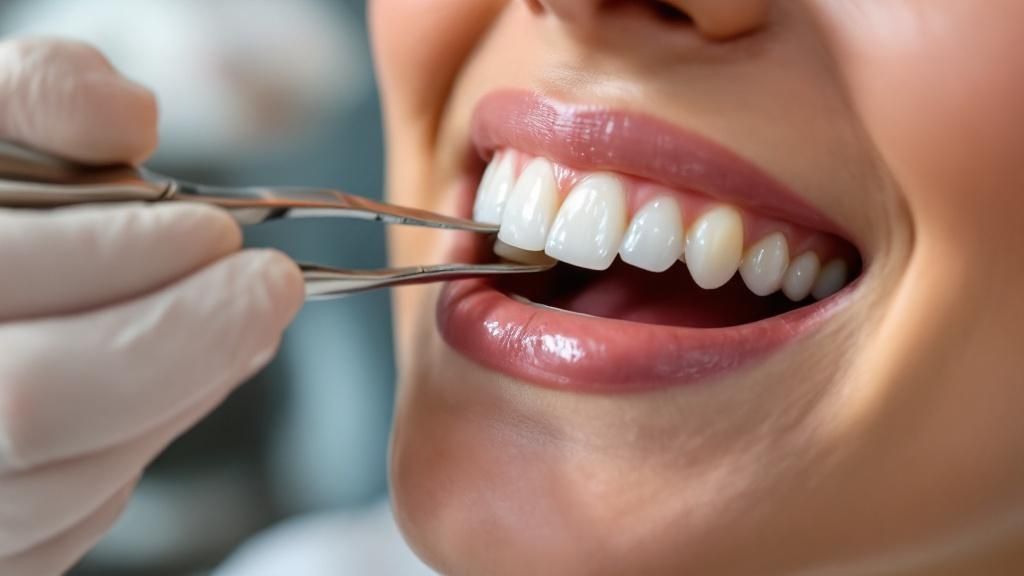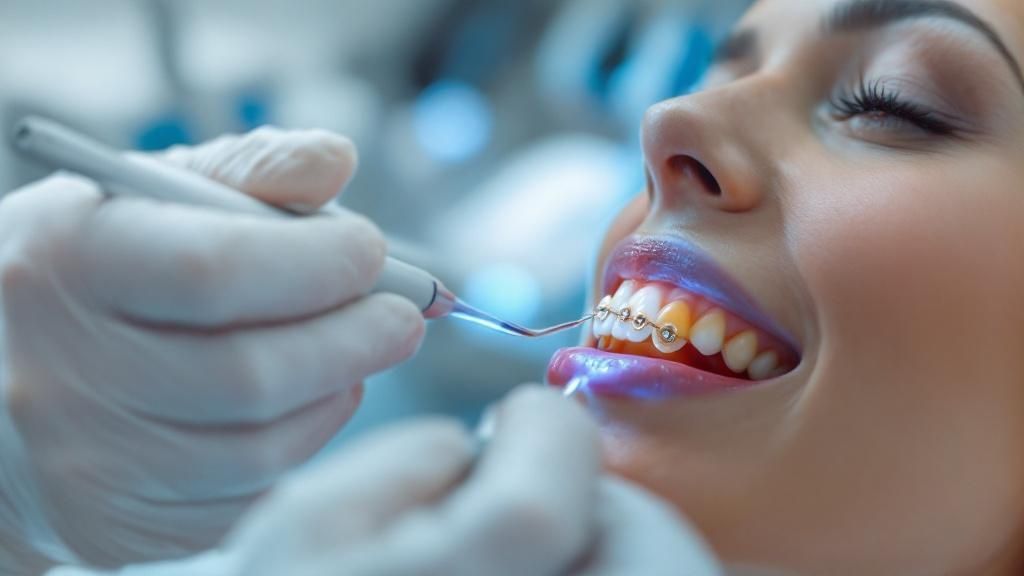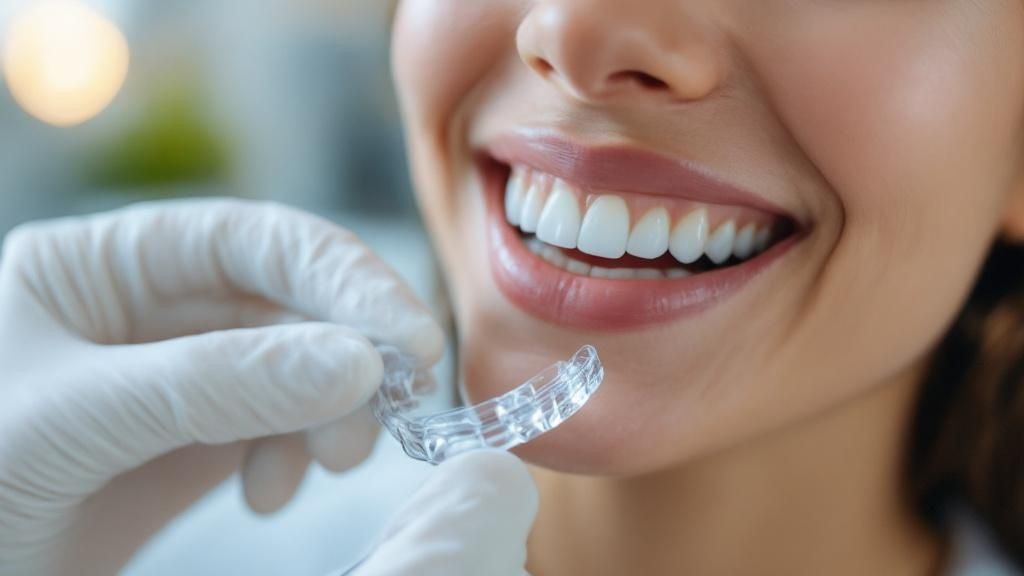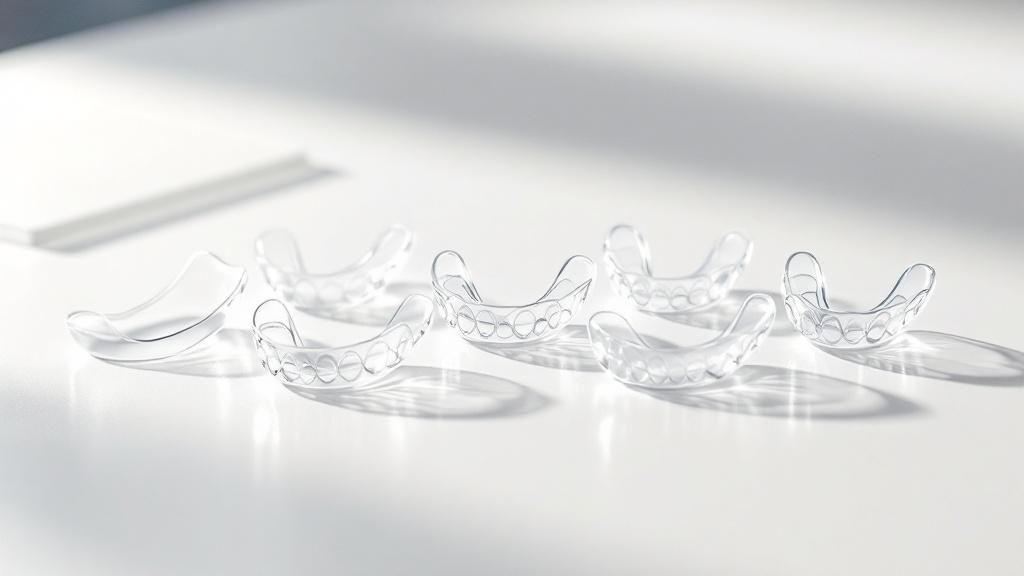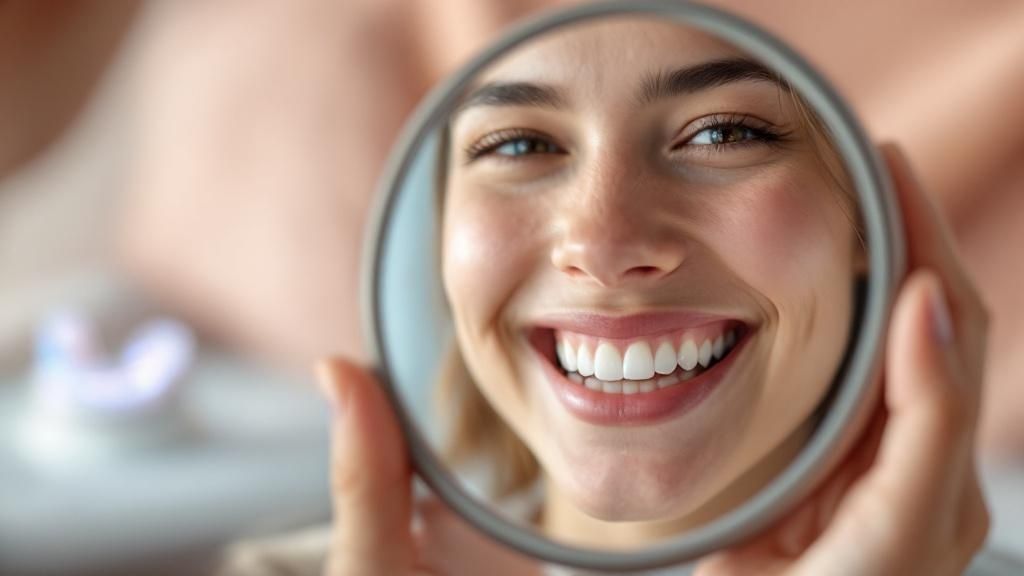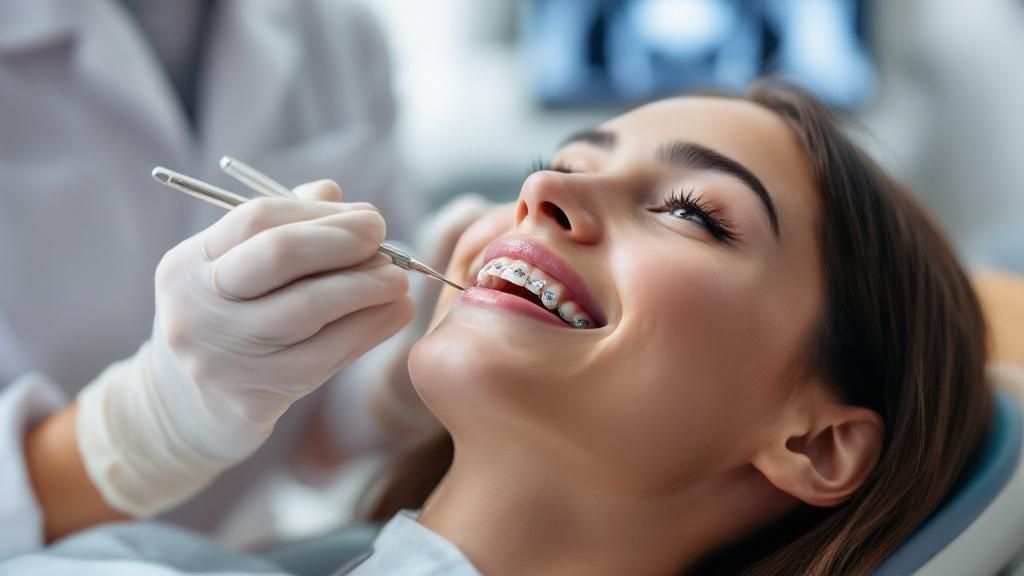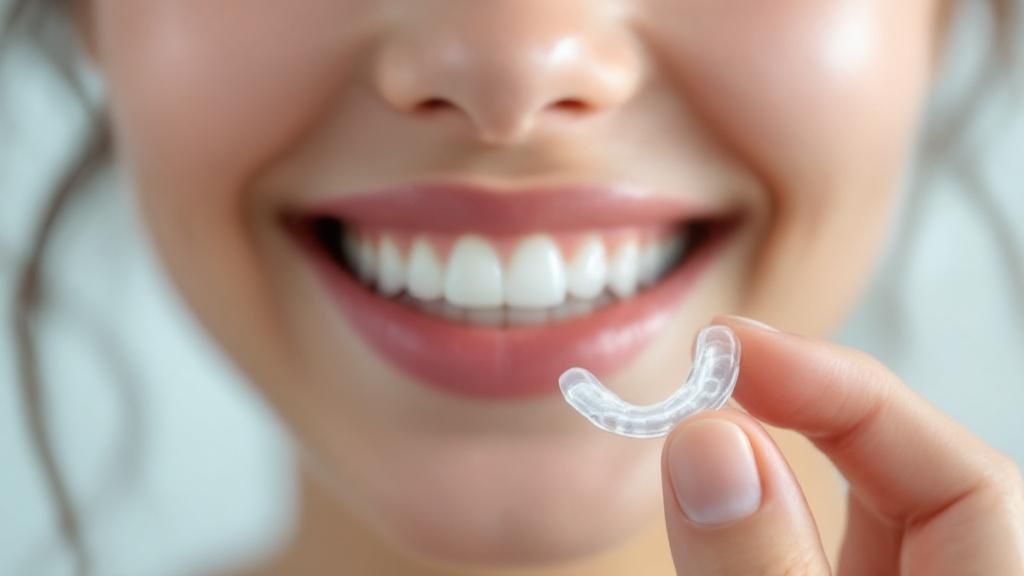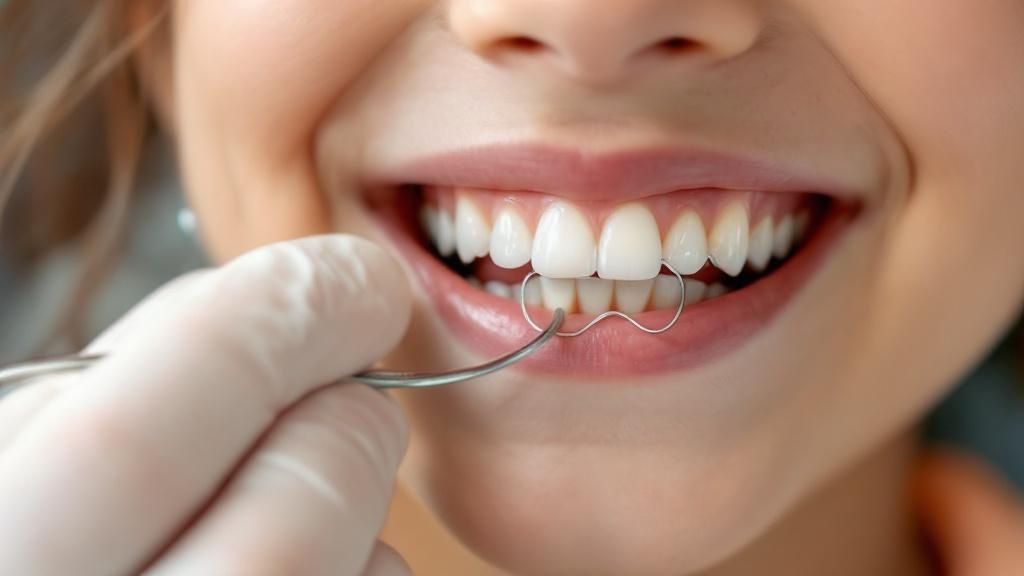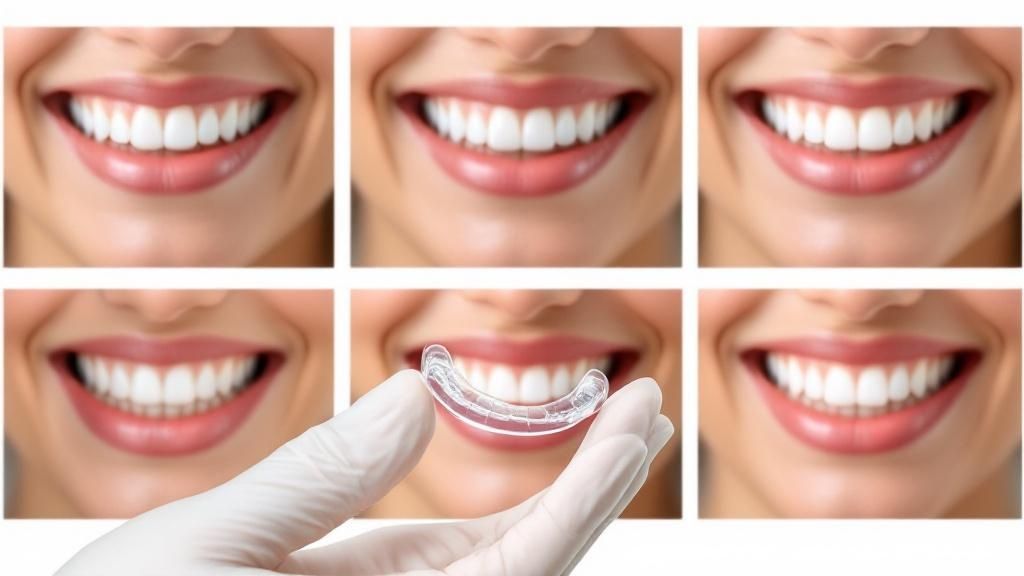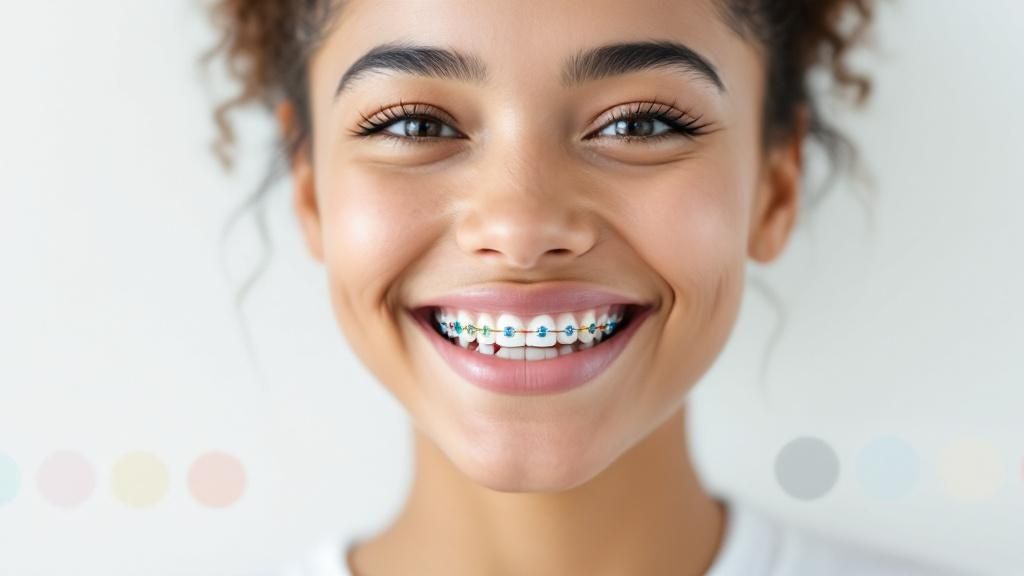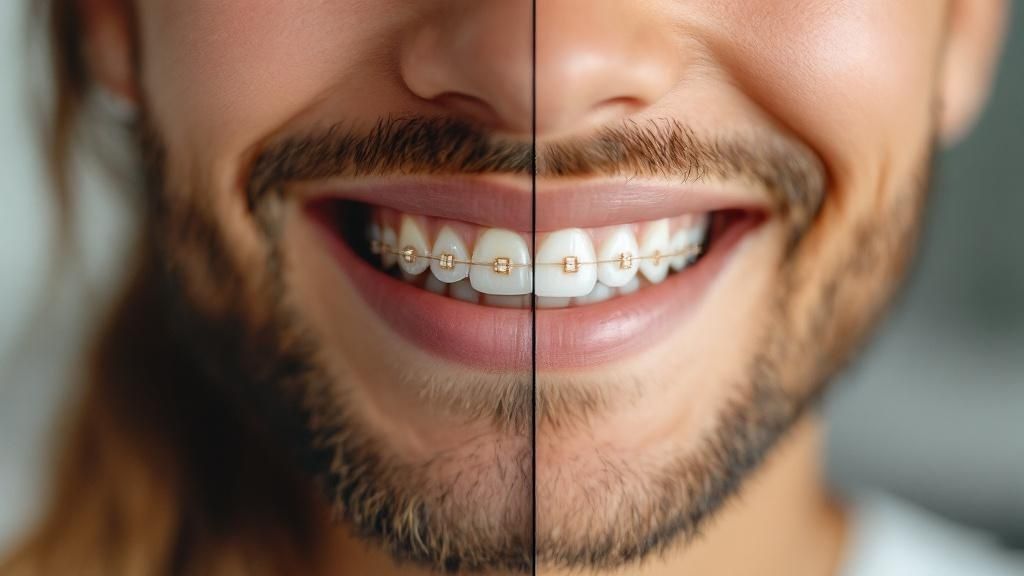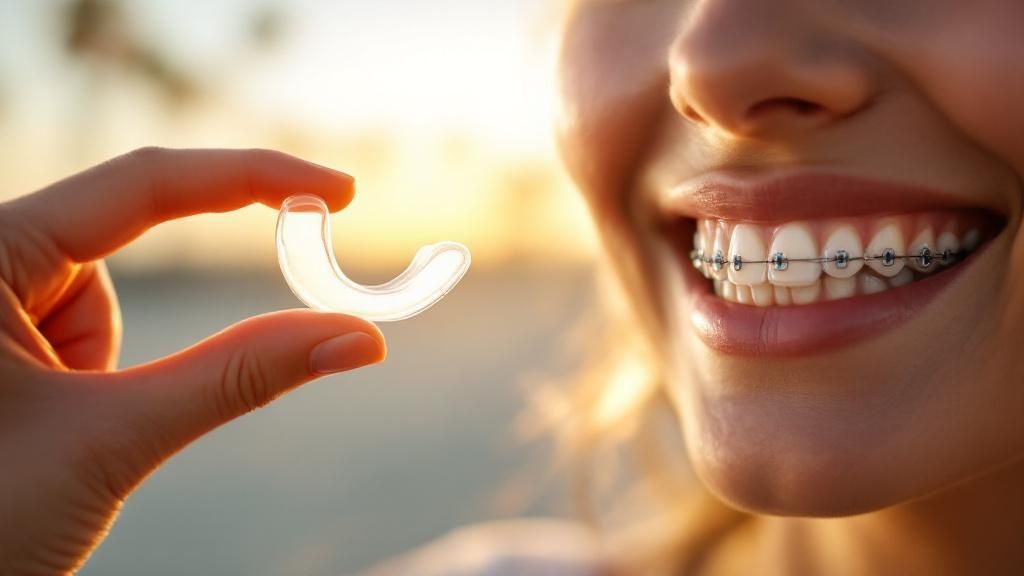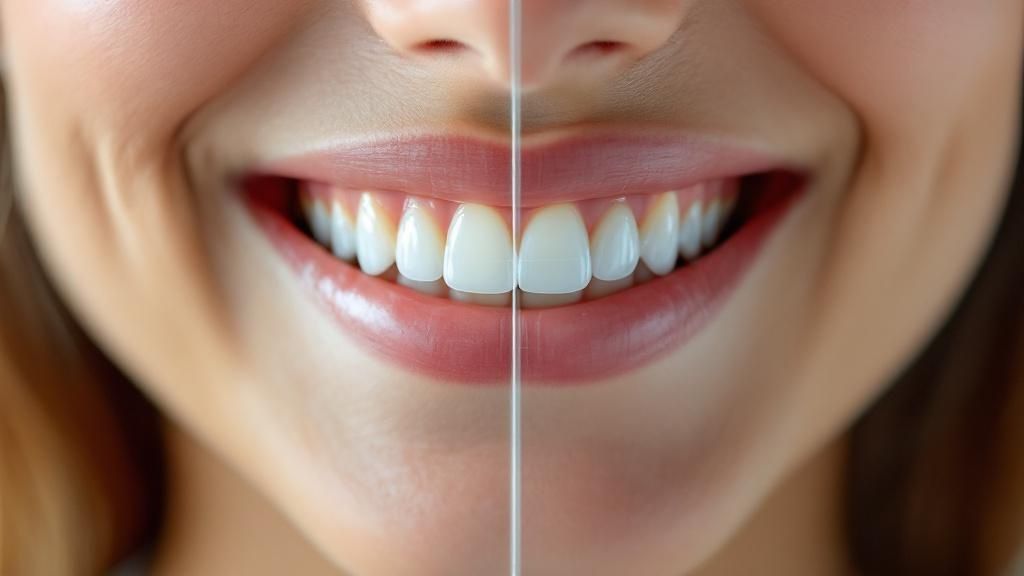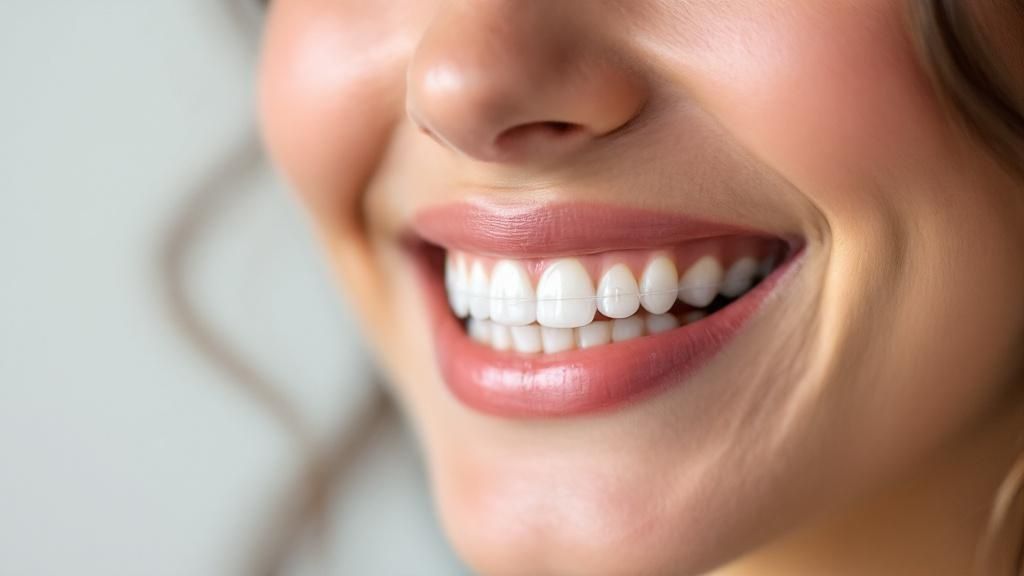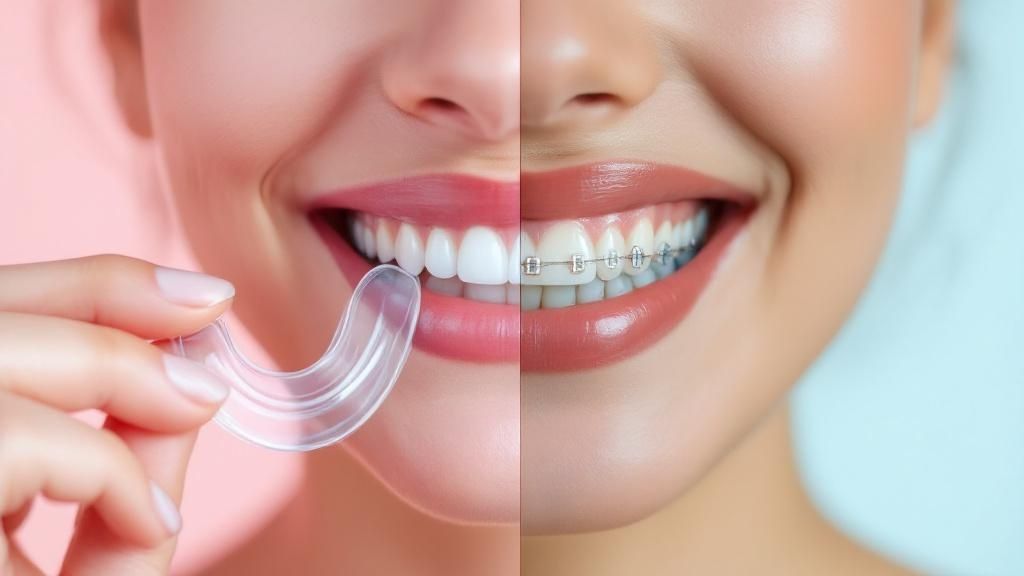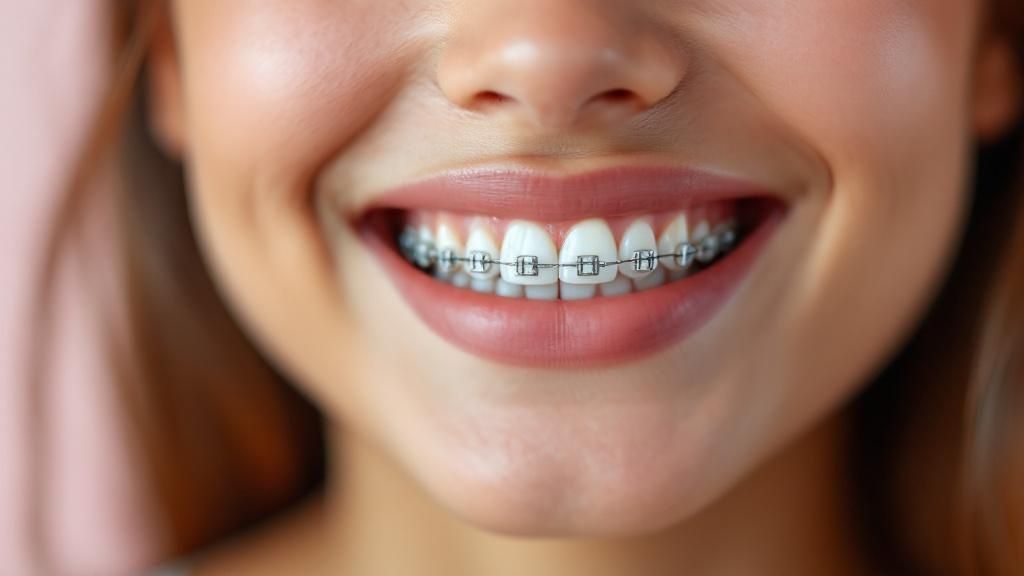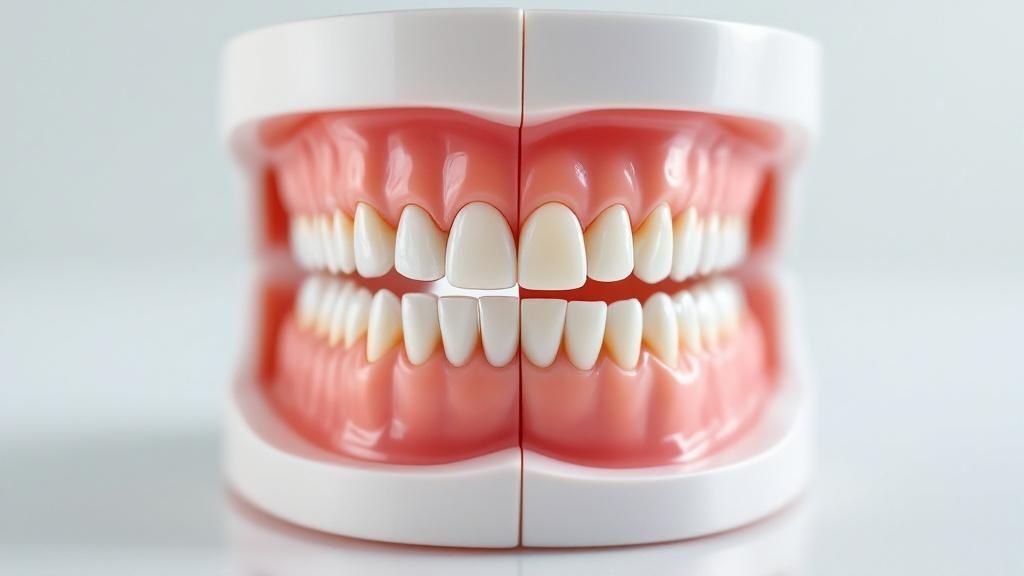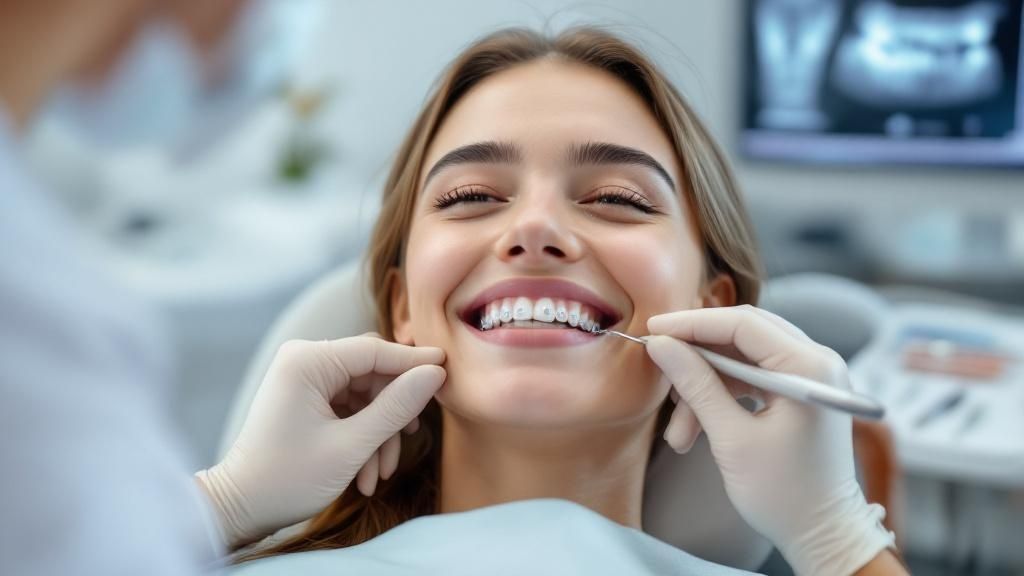
When to Start Orthodontic Treatment: An Expert Guide for Parents
The American Association of Orthodontists has a clear recommendation: a child's first orthodontic check-up should happen by age 7. This might sound surprisingly young, but this first visit is rarely about putting on braces right away.
Think of it as a wellness check for your child’s developing smile and jaw. It gives us a valuable sneak peek into their future oral health and helps us plan the perfect time for treatment, if needed.
Your Child's First Orthodontic Visit: What to Expect
The thought of an orthodontic visit for your little one can bring up a lot of questions. For parents here in Huntington Beach and the surrounding communities, understanding this process can provide peace of mind.
At Magic Fox Orthodontics, we use this first check-up to see how your child’s adult teeth are coming in. We also spot any subtle issues with jaw growth that might be lurking under the surface, getting ahead of potential problems before they become more complex.
What We Evaluate at Age 7
During this crucial first visit, our main job is to observe and detect. We're assessing the entire developing structure of your child's face and jaw, not just the teeth you can see.
Here are a few key things we look for:
- Jaw Growth Patterns: We check for signs of an uneven bite, like a crossbite or underbite. These issues are often much easier to guide and correct while the jaw is still growing.
- Space for Permanent Teeth: We see if there's enough room for all the adult teeth to come in comfortably. Identifying crowding early lets us create a plan to make space, often preventing the need for tooth extractions later.
- Protruding Teeth: Front teeth that stick out are more prone to getting chipped or broken during playtime. We can spot this early and recommend steps to protect them.
- Harmful Oral Habits: We also look for the effects of habits like thumb-sucking or tongue-thrusting, which can quietly influence how the teeth and jaw develop.
This visual guide helps show why an early look is so foundational to a successful orthodontic journey.
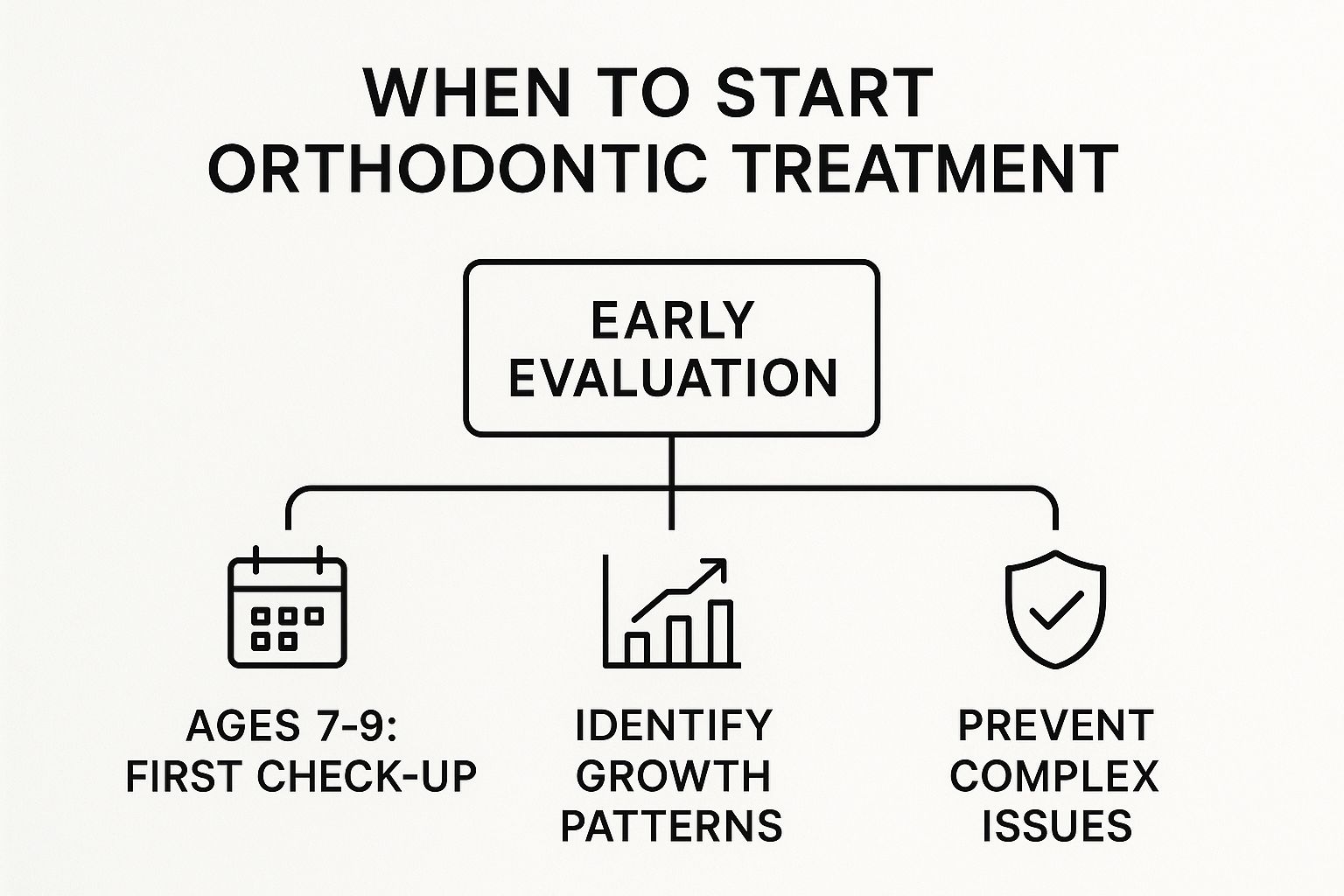
By proactively examining your child’s development, we can sometimes use a strategy called "two-phase treatment." This approach involves guiding jaw growth first, which often simplifies the second phase of straightening the teeth.
For most kids we see from Fountain Valley, this first visit simply results in a "watch and wait" approach. If we do spot a developing issue, early intervention can make future treatment shorter, less invasive, and more effective.
Key Orthodontic Milestones by Age
To help you keep track of your child's dental journey, here is a quick reference guide. This table breaks down what to look for at different stages.
This table is a general guide, as every child's development is unique. A personalized evaluation with an orthodontist in Huntington Beach is the best way to create a plan that’s just right for them.
Why Age 7 Is the Ideal Time for an Evaluation
You might be wondering, "Why age 7? Isn't that a little young to be thinking about orthodontics?" This age is a crucial window of opportunity in your child's dental development.
By age 7, most kids have a mix of baby teeth and their first permanent molars. This gives us a unique preview of what’s to come, letting us be proactive rather than reactive.
Spotting Problems Before They Grow
This early evaluation is all about getting ahead of the game. At this stage, our orthodontists can spot the subtle, early signs of developing issues like malocclusions (the official term for a misaligned bite).
Here’s what an early check-up helps us do:
- Guide Jaw Growth: We can see if one jaw is outgrowing the other and gently guide them into a more balanced position as they develop.
- Create More Space: For kids showing early signs of crowding, we can take simple steps to make sure there's enough room for all the adult teeth.
- Protect Vulnerable Teeth: Front teeth that stick out are at a much higher risk of being chipped or broken. An early look allows us to identify this risk and protect their smile.
Catching a developing underbite at age 7, for instance, often means treatment will be shorter and less invasive than if we waited until the jaw has finished growing.
This first visit is an information-gathering session designed to give you a clear picture of your child’s dental journey. You can learn more by understanding the importance of early orthodontic care for kids in our detailed guide.
Navigating Orthodontic Treatment During The Teen Years
The teenage years are the most common time for orthodontic treatment. Think of this period as a clinical "sweet spot"—most of your teen’s permanent teeth have made their appearance.
We can also work with adolescent growth spurts to help correct bite issues more efficiently. Socially, seeing friends and classmates around Huntington Beach schools with braces can make the process feel like a shared rite of passage.

Why This Is The Prime Time For Treatment
The biological changes happening during the teen years create a perfect window for us to get to work. The jawbone is mature but still malleable, making it more responsive to gentle forces from braces or aligners.
Research backs this up. A large-scale study found that the peak age for starting treatment is between 11 to 13 years old. (Source: PMC) You can read the full research about these orthodontic trends to learn more.
For teens in Fountain Valley and surrounding areas, this means we can achieve significant, lasting results by working with their natural growth. It’s about setting them up with a healthy, stable bite for life.
Modern Options For Today’s Teens
Today’s orthodontic solutions are designed with the modern teenager in mind. At Magic Fox Orthodontics, we offer treatments that align with your teen’s personality and lifestyle.
- Invisalign® Clear Aligners: Perfect for the teen who wants a discreet option. These removable aligners are nearly invisible and allow for easier cleaning and no food restrictions.
- Iconix Esthetic Brackets: For those who prefer the reliability of braces but want a more stylish look, these champagne-colored brackets offer a subtle, sophisticated alternative to traditional metal.
- Traditional Metal Braces: A time-tested and highly effective solution. Today's metal braces are smaller and more comfortable than ever before.
If you're wondering what to look for, check out our guide on the top 5 signs it's time for your teen to get orthodontic treatment. This journey is a partnership between our team, your teen, and you.
Embracing a New Smile: The Rise of Adult Orthodontics
It’s a common misconception that orthodontic work is just for kids and teens. The truth? It’s never too late to get the healthy, confident smile you’ve always wanted.
We see many adults from Huntington Beach and Fountain Valley who are ready to finally invest in themselves. For many, the decision goes beyond cosmetics to improve their overall oral health, address jaw pain, or prepare for restorative work like implants.

Why More Adults Are Choosing Treatment
The old stigma of wearing braces as a grown-up is quickly disappearing. Today, about one in three orthodontic patients is an adult. (Source: American Association of Orthodontists, 2022)
This isn't just a trend; it's a shift in understanding. People are recognizing that orthodontics is a key part of long-term wellness. A properly aligned bite can head off future dental problems, from gum disease to tooth loss.
Modern Solutions for Professional Lifestyles
We know our patients in communities like Goldenwest and Wintersburg need options that fit seamlessly into a professional lifestyle. At Magic Fox Orthodontics, we offer state-of-the-art treatments designed for modern adults.
- Invisalign® Clear Aligners: These custom-made, removable trays are practically invisible. They offer incredible flexibility, letting you pop them out for important meetings or meals.
- Iconix® Esthetic Brackets: For those who need the structural power of traditional braces but want a more subtle look, Iconix is the perfect compromise. Their unique champagne color blends beautifully with your teeth.
Choosing to begin your orthodontic journey as an adult is a powerful act of self-care. To see just how transformative this journey can be, read our article on the 7 incredible benefits of adult orthodontics for a healthier smile.
Signs Your Family Might Need Orthodontic Care
How do you know if it’s the right time for an orthodontic check-up? Think of these signs as your smile's "check engine" light—signals that it’s probably a good idea to get a professional opinion.
For families in our local communities like Wintersburg and Oak View, knowing what to look for makes taking that next step feel much less intimidating.
Visual and Functional Red Flags
Some orthodontic problems are easy to see, but others are more subtle. These signs don't always mean treatment is certain, but they definitely warrant a conversation with an orthodontist.
Keep an eye out for these common indicators:
- Crooked or Overlapping Teeth: Crowding makes it tough to clean properly, which can increase the risk of cavities.
- Difficulty Chewing or Biting: If you or your child often bites their cheek or struggles with chewing, the bite might be misaligned.
- Mouth Breathing: Consistently breathing through the mouth instead of the nose can affect how the face and jaw develop.
- Speech Difficulties: Sometimes, a lisp or other speech issue is connected to the position of the teeth and tongue.
- Thumb or Finger Sucking: Habits that continue past age five can push the front teeth forward and change the shape of the jaw.
- Jaws That Shift or Make Sounds: Clicking or popping sounds from the jaw joint can be a red flag for a bite problem.
Answering the big "when to start orthodontic treatment" question often starts right here, by noticing one of these signs. To get a better idea of what comes next, you can check out our guide on what is the process for getting braces.
Common Orthodontic Issues and What They Mean
A "bad bite" isn't just one problem—it can show up in several different ways. This table breaks down some of the most common orthodontic issues.
Getting familiar with these terms helps you understand exactly what an orthodontist is looking for during an evaluation.
What We Can Learn From Global Treatment Timing
When we examine healthcare policies from around the world, we get a wider perspective on why timing is so critical in orthodontics. The early teen years are consistently pinpointed as the most effective window for orthodontic correction.
This is when an orthodontist can work with natural growth spurts, making the entire process smoother, faster, and more predictable.

The Global Consensus on Early Adolescence
Take a look at countries with subsidized healthcare systems, like Norway. They have focused policies to begin orthodontic treatment based on clinical need during a very specific age range.
This data doesn't mean treatment outside this window won't work. But it does highlight why the teen years are so often called the "sweet spot" for orthodontics.
The core takeaway is simple: biology doesn't change with location. The same developmental advantages seen in global studies apply to kids growing up in Fountain Valley, Oak View, and right here in Huntington Beach.
At Magic Fox Orthodontics, our recommendations are rooted in this same proven science. By aligning our care with well-established biological timelines, we ensure your family gets treatment when it will have the most significant and lasting impact.
Frequently Asked Questions About Starting Orthodontic Treatment
Making the decision to start orthodontic treatment always comes with a few questions. We’ve put together some of the most common ones we hear from families right here in our Huntington Beach office.
Does my child automatically need braces if they see an orthodontist at age 7?
Not at all. The age 7 visit is a check-in, not a commitment. We only recommend early treatment if we spot something that could become a more significant problem later.
Is orthodontic treatment painful?
It’s normal to feel some mild soreness for a few days after adjustments or starting a new set of aligners. This temporary feeling is manageable, and modern options like Iconix brackets and Invisalign are designed for comfort.
How long does orthodontic treatment usually take?
The length of treatment varies, but on average, most of our patients complete their journey in about 18 to 24 months. We will give you a personalized timeline during your free consultation at our Huntington Beach office.
Is it harder to get braces as an adult?
Healthy teeth can be moved at any age. While adult treatment might take a little longer than for a teen, the results are just as effective and life-changing with modern, discreet options.
What is the cost of orthodontic treatment in Huntington Beach?
The cost depends on your unique needs, like the type of appliance and the complexity of your case. At Magic Fox Orthodontics, we offer flexible, interest-free payment plans and will walk you through all financial options at your consultation.
Ready to transform your smile? Contact Magic Fox Orthodontics in Huntington Beach today to schedule your free consultation! Visit us online at https://www.magicfoxsmiles.com or call us at (714) 594-5777 to get started.

